Becca Hillburn's Blog, page 16
May 31, 2018
Webcomic Chat 'Education' Illustration Development
Recently, I was selected to submit questions to Webcomic Chat based on participants experiences with art education, both in a formal setting and through self guidance, as part of a program to promote the NATTO scholarship. Since I was tapped to submit questions, I was also given the opportunity to create the promotional art for this chat. In the past, I've done two other illustrations for Webcomic Chat- one for Self Promotion and one for Kidlit Comics, and it was a pleasure to create another watercolor illustration for a topic I treasure.
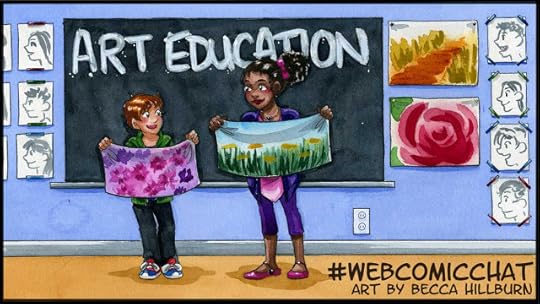
Past Webcomic Chat Illustrations:

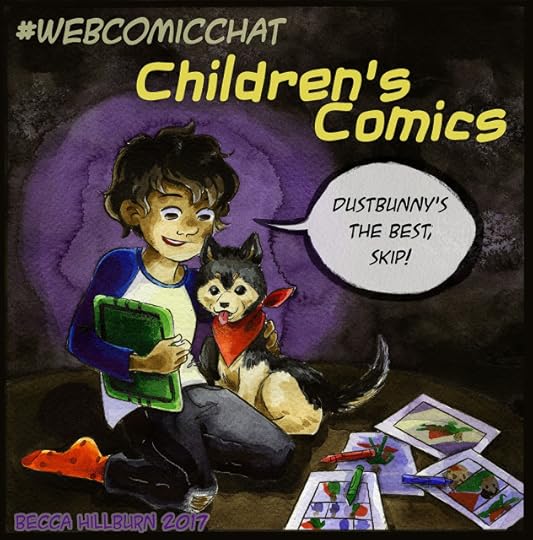
All three of my WCC illustrations are watercolor, but all three underwent a digital sketching stage, and then digitization for lettering and distribution.
My Art Education topic was inspired by the NATTO Scholarship!
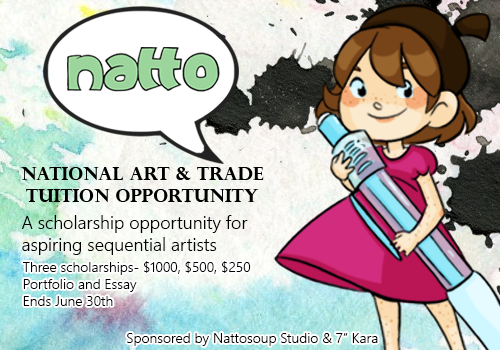
The NATTO Scholarship is a series of small scholarships aimed at helping artists pursue their art education. We're awarding three scholarships- $1000, $500, and $250 to three lucky entrants! You can find out more information about the NATTO scholarship, as well as entry information here.
About Webcomic Chat:

Webcomic Chat is a weekly Twitter chat aimed at discussing webcomic process, promotion, and lifestyle. It's hosted on the WebComic Chat twitter page, and participants are encouraged to use the #webcomicchat hashtag. Volunteers are solicited to submit questions and art, and on occassion, I'm fortunate enough to be picked.
Sketch:

I took a photo of this Post It with my phone, and sent it to my Surface Pro 3. From here, I tightened the sketch digitally in Photoshop.
For some reason, this is often the easiest, and most intuitive way for me to work. I struggle with recreating thumbnails, even the most basic subjects, so being able to import an thumbnail from any surface has really opened up how I work.
These days, I frequently mix traditional and digital steps in my art process. Sketch on a Post It, pencils and tightened roughs digitally in Photoshop, print it out on watercolor paper and paint it traditionally, back to Photoshop for corrections and lettering. It frustrates me that people try to draw harsh demarcations between what is traditionally created art and what is digitally created art, and I feel like this may stifle some artists from producing their best work.

I realized the size requirements had changed from a square to a rectangular format, and this changed the composition a bit. I do prefer the close up to the longshot, but it presented a fun opportunity to decorate the classroom.

Tight Pencils:
Once I completed my digital sketch, I dropped the opacity on my sketch layers, and went over everything with a darker blue to tighten up details.
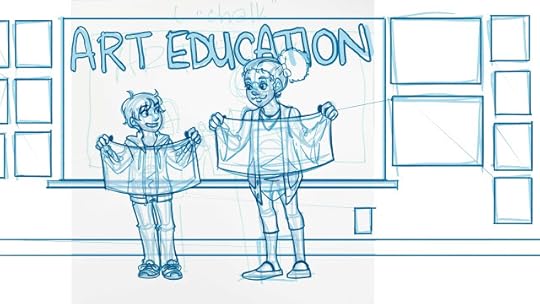
This step isn't necessary, but it makes it much easier for inking, as I can drop these to blue lines.
Bluelines: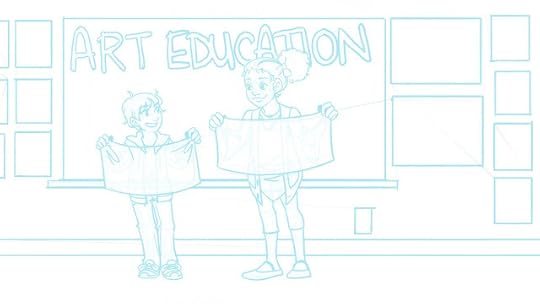
This was printed on Fabriano Studio watercolor paper (I like how it takes ink, and it performs decently for limited layer watercolor applications).
Tight Pencils: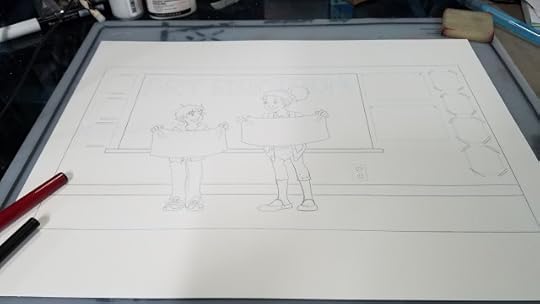
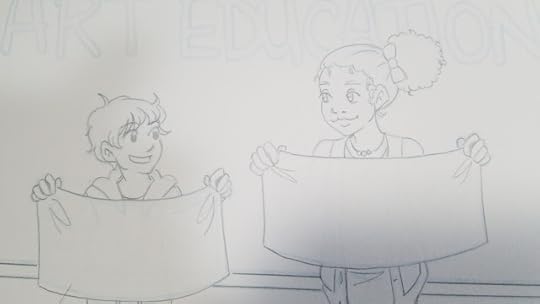
Tight pencils aren't necessary for every artist, but I enjoy using this stage as an opportunity to tighen up facial expressions, tweak hand gestures, and adjust clothing.
When completing tight pencils, I prefer to use a .7 mechanical pencil with HB lead.
Inks:
Materials:
Sakura FB brushpen
Sakura Graphic and Calligraphy pens, using Pigma ink (these will be waterproof)
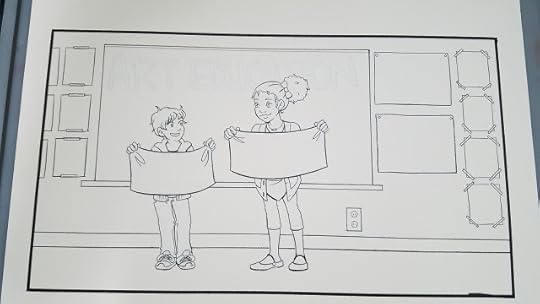
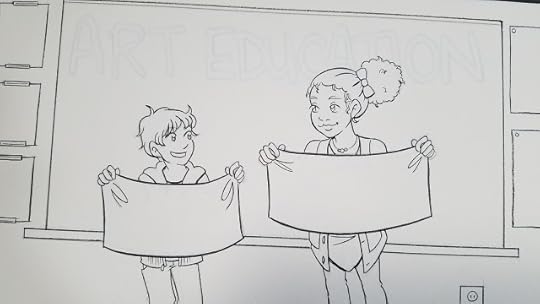
I left the phrase 'Art Education' uninked, since I want to imitate chalk on a chalkboard, and thought the inked outline would be too harsh. As stretching the watercolor paper will remove the blue guidelines, I penciled Art Education onto the chalk board, so it would remain visible.
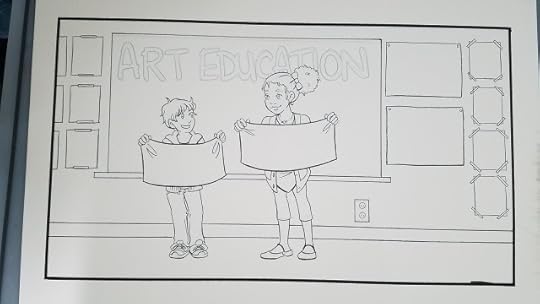

Here's the cleaned digital scan. I try to make it a point to remember to stop and scan my lineart inks before painting, so I have the option to use it as a digital piece, or can offer it as a lineart on my Gumroad.
When inking the border, my hand slipped. This is something that can't be corrected with traditional media until after I've watercolored the piece- if it can be corrected at all.
Watercolor:
Stretching the Page
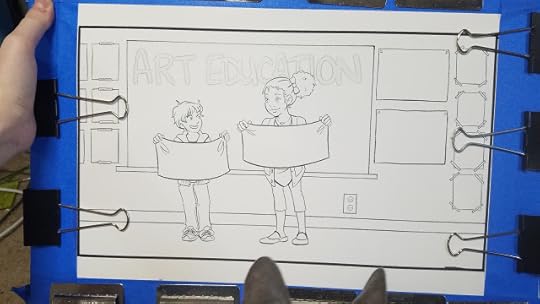
For a tutorial on how I stretch watercolor paper, check out this post.
Toning and Beginning the Background (large forms)
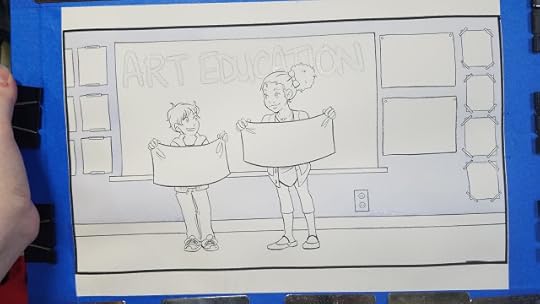
This is mainly just to give the piece an overall base color. .In this instance, I went with a light wash of warm yellow.
Applying Masking Liquid

Materials:
Clean Water
Masking Fluid (Winsor and Newton Colorless Masking Fluid)
Synthetic Brush
Brush Soap
My preferred masking liquid is Winsor and Newton Colorless Masking Fluid, but every artist seems to have their preference. If you're struggling to find one that works for you, don't lose hope- there are many on the market, and not all play nicely with every watercolor paper.
Painting the Chalkboard

Removing the Masking Fluid

Once I've achieved the color depth I'm looking for, and the paper has fully dried, I use a masking fluid eraser to pick up the masking fluid. For best success with masking fluid, I find it best to remove it as soon as possible- this fluid sat on the page for only a couple days.
Toning the Letters
I felt like the letters were a little too white, and needed some variation to look like chalk. I planned on adding opaque white/white watercolor pencil later on to add highlights back in, so I went ahead and glazed some blue grey over Art Education.


Rendering the Characters:


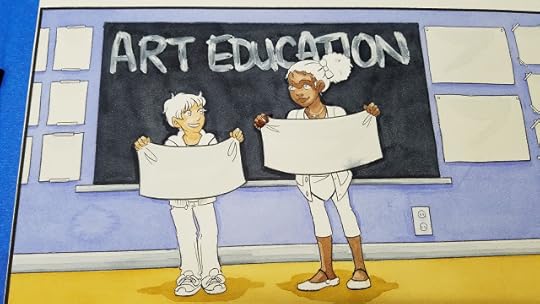


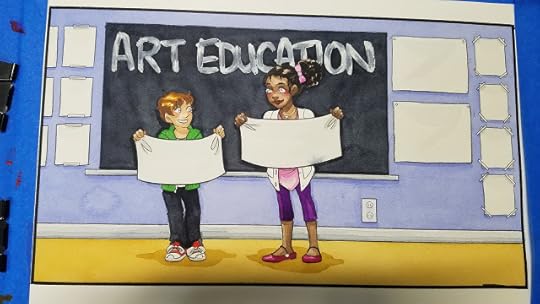


Adding Environmental Details:
Once most of the illustration has been completed, I start adding in small environmental details. Since this is an art classroom, I have an opportunity to create mi nature works of art. The goal is to make pieces that could feel like they were made by young students.



I decided to do profile portraits to fill the majority of space, since I have fond memories of sketching those for art class.


Scanning and Color Correction:
I scan using a large format Epson scanner- quite a pricey investment that has served me well over the years. I scan at 600DPI as it better picks up the nuances of watercolor. I've found my scanner isn't quite perfect- it tends to desaturate originals, and sometimes colors will skew, so once the piece is scanned, I open it up in Photoshop for color correction.

Color correction can vary piece to piece, but generally I'll do a little tweaking in Hue and Saturation (generally just changing the hue to be a bit warmer, since my Epson tends to be a bit cool). After Hue and Saturation, I'll duplicate my scan layer, set the duplicate to multiply, and then knock it down until it matches the original.
Please note: Both my work monitors have been color calibrated.
Lettering is also done in Photoshop. I'm a big fan of Blambot's comic fonts- the font used here is Letteromatic. Blambot has a lot of free to use fonts for indie and web creators, so if you're having trouble with your lettering, I highly recommend you check them out!

Please consider donating to this blog or purchasing from Natto-shop (http://nattosoup.com/shop) if you want me to continue publishing quality content. All materials tested were purchased from my own pocket. Keep on Truckin' Nattosoup is not under any sponsorship.

Past Webcomic Chat Illustrations:


All three of my WCC illustrations are watercolor, but all three underwent a digital sketching stage, and then digitization for lettering and distribution.
My Art Education topic was inspired by the NATTO Scholarship!

The NATTO Scholarship is a series of small scholarships aimed at helping artists pursue their art education. We're awarding three scholarships- $1000, $500, and $250 to three lucky entrants! You can find out more information about the NATTO scholarship, as well as entry information here.
About Webcomic Chat:

Webcomic Chat is a weekly Twitter chat aimed at discussing webcomic process, promotion, and lifestyle. It's hosted on the WebComic Chat twitter page, and participants are encouraged to use the #webcomicchat hashtag. Volunteers are solicited to submit questions and art, and on occassion, I'm fortunate enough to be picked.
Sketch:

I took a photo of this Post It with my phone, and sent it to my Surface Pro 3. From here, I tightened the sketch digitally in Photoshop.
For some reason, this is often the easiest, and most intuitive way for me to work. I struggle with recreating thumbnails, even the most basic subjects, so being able to import an thumbnail from any surface has really opened up how I work.
These days, I frequently mix traditional and digital steps in my art process. Sketch on a Post It, pencils and tightened roughs digitally in Photoshop, print it out on watercolor paper and paint it traditionally, back to Photoshop for corrections and lettering. It frustrates me that people try to draw harsh demarcations between what is traditionally created art and what is digitally created art, and I feel like this may stifle some artists from producing their best work.

I realized the size requirements had changed from a square to a rectangular format, and this changed the composition a bit. I do prefer the close up to the longshot, but it presented a fun opportunity to decorate the classroom.

Tight Pencils:
Once I completed my digital sketch, I dropped the opacity on my sketch layers, and went over everything with a darker blue to tighten up details.

This step isn't necessary, but it makes it much easier for inking, as I can drop these to blue lines.
Bluelines:

This was printed on Fabriano Studio watercolor paper (I like how it takes ink, and it performs decently for limited layer watercolor applications).
Tight Pencils:


Tight pencils aren't necessary for every artist, but I enjoy using this stage as an opportunity to tighen up facial expressions, tweak hand gestures, and adjust clothing.
When completing tight pencils, I prefer to use a .7 mechanical pencil with HB lead.
Inks:
Materials:
Sakura FB brushpen
Sakura Graphic and Calligraphy pens, using Pigma ink (these will be waterproof)


I left the phrase 'Art Education' uninked, since I want to imitate chalk on a chalkboard, and thought the inked outline would be too harsh. As stretching the watercolor paper will remove the blue guidelines, I penciled Art Education onto the chalk board, so it would remain visible.


Here's the cleaned digital scan. I try to make it a point to remember to stop and scan my lineart inks before painting, so I have the option to use it as a digital piece, or can offer it as a lineart on my Gumroad.
When inking the border, my hand slipped. This is something that can't be corrected with traditional media until after I've watercolored the piece- if it can be corrected at all.
Watercolor:
Stretching the Page

For a tutorial on how I stretch watercolor paper, check out this post.
Toning and Beginning the Background (large forms)

This is mainly just to give the piece an overall base color. .In this instance, I went with a light wash of warm yellow.
Applying Masking Liquid

Materials:
Clean Water
Masking Fluid (Winsor and Newton Colorless Masking Fluid)
Synthetic Brush
Brush Soap
My preferred masking liquid is Winsor and Newton Colorless Masking Fluid, but every artist seems to have their preference. If you're struggling to find one that works for you, don't lose hope- there are many on the market, and not all play nicely with every watercolor paper.
Painting the Chalkboard

Removing the Masking Fluid

Once I've achieved the color depth I'm looking for, and the paper has fully dried, I use a masking fluid eraser to pick up the masking fluid. For best success with masking fluid, I find it best to remove it as soon as possible- this fluid sat on the page for only a couple days.
Toning the Letters
I felt like the letters were a little too white, and needed some variation to look like chalk. I planned on adding opaque white/white watercolor pencil later on to add highlights back in, so I went ahead and glazed some blue grey over Art Education.


Rendering the Characters:








Adding Environmental Details:
Once most of the illustration has been completed, I start adding in small environmental details. Since this is an art classroom, I have an opportunity to create mi nature works of art. The goal is to make pieces that could feel like they were made by young students.



I decided to do profile portraits to fill the majority of space, since I have fond memories of sketching those for art class.


Scanning and Color Correction:
I scan using a large format Epson scanner- quite a pricey investment that has served me well over the years. I scan at 600DPI as it better picks up the nuances of watercolor. I've found my scanner isn't quite perfect- it tends to desaturate originals, and sometimes colors will skew, so once the piece is scanned, I open it up in Photoshop for color correction.

Color correction can vary piece to piece, but generally I'll do a little tweaking in Hue and Saturation (generally just changing the hue to be a bit warmer, since my Epson tends to be a bit cool). After Hue and Saturation, I'll duplicate my scan layer, set the duplicate to multiply, and then knock it down until it matches the original.
Please note: Both my work monitors have been color calibrated.
Lettering is also done in Photoshop. I'm a big fan of Blambot's comic fonts- the font used here is Letteromatic. Blambot has a lot of free to use fonts for indie and web creators, so if you're having trouble with your lettering, I highly recommend you check them out!

Please consider donating to this blog or purchasing from Natto-shop (http://nattosoup.com/shop) if you want me to continue publishing quality content. All materials tested were purchased from my own pocket. Keep on Truckin' Nattosoup is not under any sponsorship.

Published on May 31, 2018 13:00
May 28, 2018
Canson Montval Watercolor Paper Review
 7" Kara Chapter 5 CoverAs longtime readers know, I'm a watercolor comic artist. Or at least, I consider comics my craft, and watercolor my primary medium. I also do kidlit illustration, but my true passion lies in comics. Montval is where my two interests coincide.
7" Kara Chapter 5 CoverAs longtime readers know, I'm a watercolor comic artist. Or at least, I consider comics my craft, and watercolor my primary medium. I also do kidlit illustration, but my true passion lies in comics. Montval is where my two interests coincide.Canson Montval is the first cellulose based cold press watercolor paper I've reviewed in a while. When it comes to illustration, I've moved mainly to cotton rag papers (although I do use Fabriano Studio for inks on occasion, as I like the tooth), but for comic pages, I work almost exclusively on Montval. I find Montval to be a perfect combination to suit my needs- it comes in a useful size, so I don't have to cut it down, it runs through my printer easily, it's quite affordable, it comes in 20 sheet packs, and it can handle almost everything I throw at it, while retaining sharp detail.
All 7" Kara pages post Chapter 1 have been painted on Canson Montval Watercolor Paper. This means I've had almost six years of experience painting on Montval, and have painted almost 200 watercolor comic pages on this paper, so I have a lot of experience with this paper.
Montval is probably not a suitable paper for watercolorists or every illustrator, but it's quite suited to my watercolor comic needs. Over the two years I've worked on my Watercolor Basics series, many of the comic focused tutorials were painted on Montval watercolor paper.
Canson Montval is considered a student grade watercolor paper (although I can't understand learning on a paper that doesn't perform like the papers you want to upgrade to), and there have been some complaints about it going downhill. I haven't experienced this issue yet, and hope I never experience it while painting 7" Kara pages. You should note that I ALWAYS stretch Montval paper (unless it's in my Montval Sketchbook)- Montval buckles badly if not stretched.
Note: All images in this blogpost are from 7" Kara, and are on Canson Montval watercolor paper. If you want to see how Montval performs, page after page, please go read the comic, it's free.
 Page from Chapter 2
Page from Chapter 2The Stats:
Cellulose-based paper90lb-140lb, with several weights in betweenAvailable in Cold Pressed and 'Snowy Grain'Sheets- 22"x30 (124lb), 22"x30" (140lb)Rolls- 36"x5yd, 38"x5ydPads (140lb) 9"x12", 10"x15", 15"x20", 18"x24", 5.5"8.5", 9"x12"Albums- 10"x7", 14"x11"Art Board (90lb)- 16"x20", 20"x30"Blocks (140lb)- 4"x6", 6"x9", 9"x12", 12"x16", 15"x20"Wirebound Sketchbooks (140lb) 8.5"x5.5", 9"x12" (I've only found these thru Amazon)Cards with envelopes- 5"x7" (I've only found these thru Amazon)Acid freeSuitable for watercolor, gouache, ink wash, and acrylicAvailable from DickBlick, Amazon, Cheap Joe's
 Page from Chapter 3
Page from Chapter 3Price Comparison:
Cellulose Papers:
Canson Montval
Canson Montval 140lb 10"x15" tape-bound pad, 12 sheets: $8.35 on Blick
Canson XL
Canson XL 140lb 11"x15", tape-bound pad, 30 sheets- $7.13 on Blick
Blick Studio
Blick Studio 140lb 11"x15", 15 sheets: $7.63 on Blick
Fabriano Studio
Fabriano Studio, 140lb, 11"x14" tape-bound pad, 12 sheets: $8.25 on Blick
Cotton Rag Papers:
Moulin du Roy
Moulin du Roy Coldpress Watercolor Paper, 140lb, tape bound pad 11.8"x15.7", 12 sheets $22.91 on Amazon
Kilimanjaro
Kilimanjaro Bright White Coldpress Watercolor Paper 11"x14", 20 sheets- $29.99 on Cheap Joe's
Arches
Arches Cold Press Watercolor Paper, 140lb, tape bound pad 10"x14", 12 sheets- $14.11 on Blick
Blick Premiere
Blick Premiere Cold Press Watercolor Paper, 140lb, block or sheet only, 10"x14", 20 sheets- $21.10 on Blick
 Chapter 7 Cover
Chapter 7 CoverHow does it Compare to Cotton Rag Paper?
Canson Montval is a cellulose (woodpulp) based paper, so it has some limitations. It doesn't hold water well, and dries quickly, so blending and washes can be limited, especially around tight corners. Although it holds onto pigment better than many other cellulose watercolor papers I've tried, it doesn't quite hold a candle to my favorite cotton rag papers in terms of blend-ability and color vibrancy. You may find your techniques a bit limited (mainly to glazing) on cellulose papers, and Montval isn't different.
That said, Montval handles multiple glazes well, dries quickly to allow for fairly rapid page progression, works well for watercolors and watercolor pencils, holds tight detail, and is fairly forgiving.
 Page from Chapter 6Pros:
Page from Chapter 6Pros:Dries very quickly as a cellulose paper, so pages can be worked quicklyRight ratio for comic pages (10"x15")Very affordable paperRuns through printer easily, and bluelines dissolve quicklyWhen stretched, will not buckle or cockle excessivelyColors are bright and vibrantColors layer wellPerforms better than average for cellulose watercolor papersCons:
Dries very quickly, so streaky blends, streaky washesNot capable of some of the wet into wet techniques cotton rag papers can handle due to short 'open' timeHigh quality paint brands, such as Daniel Smith, are somewhat wasted on this paper, as it's only capable of so muchVERY responsive to weather- in Nashville it dries too fast, in Louisiana, it never seems to dryBuckles if you don't stretch it
 Page from Chapter 6
Page from Chapter 6As you can see in this night scene, I had difficulty getting a diffused blend from dark to light- the paper dried too fast for me to properly blend the color out.
 Page from Chapter 4
Page from Chapter 4The Verdict:
Canson's Montval is my choice for watercolor comic pages because it's economical and behaves predictably. I find it excellent for this purpose, although I rarely use it for standalone illustrations, as I prefer cotton rag papers such as Moulin du Roy and Kilimanjaro.
Is Montval the right choice for your watercolor comics? For projects as time consuming, long-term, involved, and personal as watercolor comics, its important to find the right paper for you. I highly recommend you test out various papers to see if they serve your needs, and I hope you use my reviews to help guide your testing.
See It In Action:
7" Kara Chapter 6 Watercolor Prep- Penciling Borders:
Painting A Comic! Watercolor Tutorial:
Painting Pages- Working on a Double Page Comic Spread:
Watercolor in Progress: Painting 7 Inch Kara:
Second Opinions and Outside Resources:
ThoughtCo: Paper Weight
DickBlick: Canson Watercolor Paper Packs
Canson-Canson Montval
DickBlick: Canson Montval
Canson Montval Sketchbook Review
The Ultimate Watercolor Paper Comparison| Comparing 24 Types of Watercolor Paper
Cardstocks and Watercolor Papers: My Favorites and When To Use Them
See Be Draw: Compare Watercolor Papers: Canson Montval and Winsor and Newton Cotman
WetCanvas- Canson Watercolor Paper
Amazon Reviews: Canson Montval- Roll
Amazon Reviews: Canson Montval- Pad
Please consider donating to this blog or purchasing from Natto-shop (http://nattosoup.com/shop) if you want me to continue publishing quality content. All materials tested were purchased from my own pocket. Keep on Truckin' Nattosoup is not under any sponsorship.

Published on May 28, 2018 13:00
May 24, 2018
Arches Cold Press Watercolor Paper Review
For many painters, Arches reigns supreme over other watercolor papers. Its frequently the go-to recommendation, and I'm not here to remove its crown. I've had nothing but positive experiences with Arches watercolor papers, although as you'll read in this post, this is not unilateral- many artists struggle with Arches for various reasons.
Throughout this post, I share illustrations created on the types of Arches paper I've used, to give an overview of how their papers handle.
Papers discussed in this post:
Arches Watercolour 140lb Rough Press, Block BoundArches Watercolour 140lb Cold Press, Pad BoundArches Watercolour 300lb Cold Press, Block Bound, but removedArches Watercolour 140 lb Cold Press, Block Bound
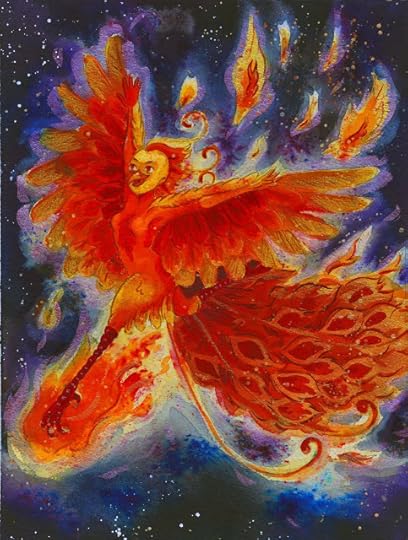 Arches 300lb Cold Press, originally block bound but removed for blueline printingBefore we get much further in this post, I'd like to clear something up.
Arches 300lb Cold Press, originally block bound but removed for blueline printingBefore we get much further in this post, I'd like to clear something up.
The Misconception:
Arches is owned by Canson.
Those slightly more in the know might think Canson originally owned Arches, and now ColArts, Winsor and Newton's parent company, have acquired it.
The Truth:
Arches watercolor paper is produced by one mill in France, which was founded in 1492. Over the years, it has merged with three other mills to form a company called Arjomari, and in the 70's Ajomari acquired Canson, and produced papers for Canson's distribution. Recently, Canson has been acquired by Hamelin, and ColArts became the Arches distributor in 2017. ColArts handles Winsor and Newton, Liquitex, Reeves, Conte a Paris and several other art material manufacturers, and is owned by Lindengruppen, a Swedish business.
Arches is currently owned by Ahlstrom-Munksjo and this partneship would give Munksjo access to ColArt's worldwide network of distribution. Ahlstrom-Munksjo makes a variety of fiber based products- wallcoverings, tape backings, beverage and food packaging, fine art papers, and even electrotechnical papers.
Sources:
http://www.wetcanvas.com/forums/archive/index.php/t-1337443.html
http://www.colart.com/our-brands/arches.html
http://www.colart.com/our-story.html
http://www.euroinvestor.com/news/2016/12/15/munksjo-oyj-colart-sole-distributor-of-arches-fine-art-papers/13499213
Arches isn't just watercolor paper. The Arches mill produces fine art papers for oil and drawing, as well as papers for art publishers.
Arches manufactures two types of watercolor paper- Lavis Fidelis/En-Tout-Cas (a double sided watercolor paper- one side hot press, one side cold press, made of 25% cotton with gelatin sizing, which we will not discuss today as I haven't tried it), and Arches Aquarelle/Watercolour paper, which we ARE discussing today.
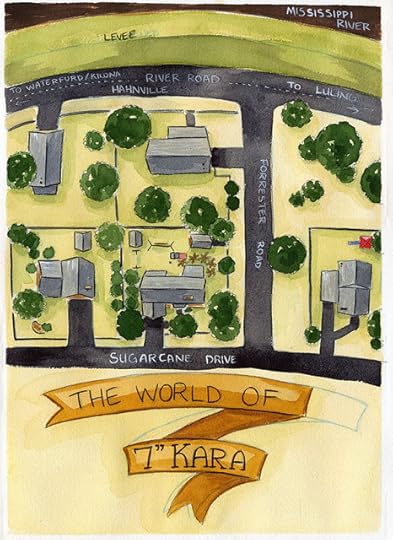 Arches 140lb Cold Press, Pad Bound
Arches 140lb Cold Press, Pad Bound
The Stats:
100% cotton rag paper, machine madeGelatin sizedAvailable in Cold, Hot, and Rough pressAvailable in:Sheets- (hot, cold, and rough press, 140lb and 300lb)- 16"x20" (CP, 140lb only), 22"x30"Rolls- (90lb, cold press)- 44.5"x10 yards(140lb, cold press)-44.5"x10 yards(140lb, hot press)- 44.5"10 yards(156lb, hot press)- 51"x10 yards(140lb, rough)- 44.5"x10 yards(156lb, rough)- 51"x10 yardsBlocks (hot, cold, and rough press, 140lb, 20 sheets)- 3.9"x9.8", 5.9"x11.8", 7.9"x7.9", 7"x10", 8"x10", 9"x12", 10"x14", 11"x14", 12"x12", 12"x16", 14"x20", 16"x20", 18"x24"(cold press, 300lb, 10 sheets)- 9"x12", 10"x14", 12"x16"Pads (140lb, hot, cold, and rough) 9"x12", 10"x14", 11.7"x16.5"Available in Bright and Natural White
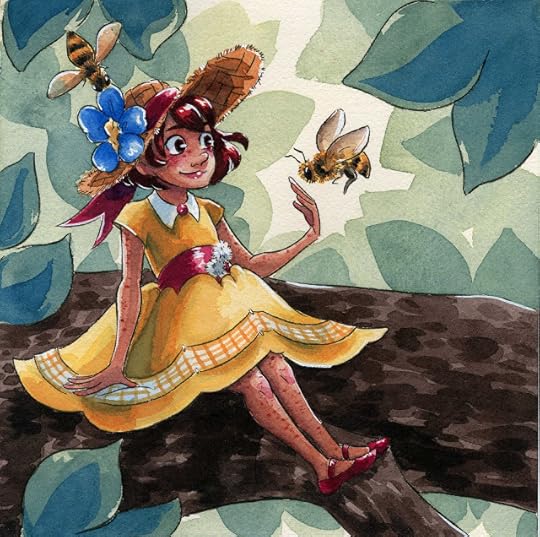 Arches 140lb, Cold Press, Block Bound
Arches 140lb, Cold Press, Block Bound
Arches
Arches 9"x12" Coldpress Block, 140lb, 20 sheets- $36.99 on Amazon
Arches 9"x12" Coldpress Block, 140lb, 20 sheets-$25.16 on Blick
Arches 9"x12" Coldpress Block 300 lb, 10 sheets, $24.75 on Cheap Joes
L'Aquarelle Canson Heritage
Heritage Watercolor Block, 140lb, 9"x12", 20 sheets- $38.40 on Blick
Heritage Watercolor Block, 140lb, 9"x12", 20 sheets- $42.07on Amazon
Not available in 300lb
Canson Moulin du Roy
Moulin du Roy 9X12 Block, 140lb, 20 sheets- $21.18 on Amazon
Not available in 300lb
Kilimanjaro
9x12 coldpress block, 140lb, 20 sheets $21.09, only available from CheapJoes
9x12 coldpress pad, 300lb, 10 sheets, $21.69 only available from CheapJoes
Fluid 1009"x12" coldpress block, 140lb 15 sheets- 16.27 on Blick (bound on 2 sides)
Saunders Waterford9"x12" coldpress block, 140lb, 20 sheets-$30.98 on Blick9"x12", coldpress, block, 300lb, 23.68 on Blick
Stonehenge Aqua9"x12", coldpress, padbound, 140lb- $16.49 on Blick
Although Arches has gotten a reputation for being a bit pricey, when compared with comparable products, Arches is just about in the middle of the pack. While both Fluid 100 and Stonehenge Aqua perform quite well as watercolor papers, they may not offer the tooth and taut block options that the other papers on this list offer. I would say a good block of Arches is worth the investment, however many other artists have noticed issues with recent sheets and blocks. There have been complaints about areas of resist that won't accept water or pigment, and there's some speculation that this is due to changes in management and quality control as the Arches mill shifts ownership over the years. I have not encountered such a problem personally, but I know that if I did, I would find it very frustrating in a paper as expensive and lauded as Arches.
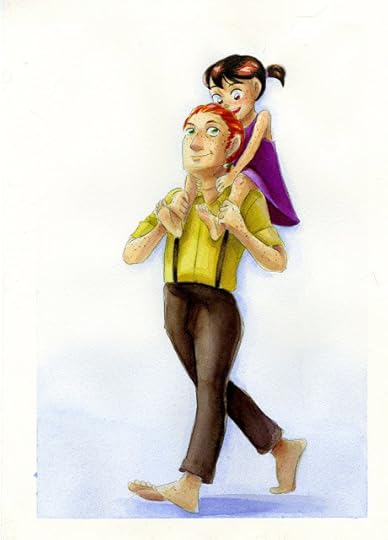 Arches, 140lb Cold Press, Pad Bound
Arches, 140lb Cold Press, Pad Bound
Arches Watercolour 140lb Rough Press, Block BoundA very rough watercolor paper that feels similar to sandpaper, and may chew up brushes. I really love the texture on Arches Rough- it's very satisfying. The gum used to bind the paper to the block does an excellent job holding the paper taut. Paper does not buckle or cockle despite paper saturation, and should not need further stretching. Paper may be difficult to remove from block without knife. Paper accepts color well, and colors remain vivid after drying. Paper can accept multiple layers of color- both wet over wet and details. Paper may be difficult to ink on, given texture. Overall, a pleasant experience.Arches Watercolour 140lb Cold Press, Pad BoundPaper needs to be stretched or will buckle, especially if a lot of water is used. In my experience, slightly less tooth than the block version of the same color- this may be due to batch, as papers were purchased several years apart. Performs comparably with Moulin du Roy (I often can't tell the difference once the papers have been removed from their pads, if unlabeled), but is easier to find. Paper is a bit soft, and details may get fuzzy- not suitable for comics work in my experience. Paper accepts color well, allows for gentle subtle blending, and can handle multiple layers of water. Overall, a pleasant experience, and an easy paper to work with.Arches Watercolour 300lb Cold Press, Block Bound, but removedPaper is almost the width of illustration board- very sturdy paper. I needed to run my illustration through my printer, so paper was removed from block beforehand using a knife. Paper released printer ink upon stretching (not necessary, but made for easier handling, and I intended on using a lot of water for this illustration). Brusho did not disperse as much as I had wanted, but colors are still very vibrant (so vibrant that the scan does not do the final piece justice- it's beautiful in person). 300lb block bound CP seems to have more texture than 140lb Pad bound CP- might be batch differences.Arches Watercolour 140 lb Cold Press, Block BoundThe gum used to bind the paper to the block does an excellent job holding the paper taut. Paper does not buckle or cockle despite paper saturation, and should not need further stretching. Paper may be difficult to remove from block without knife. Paper accepts color well, and colors remain vivid after drying. Paper can accept multiple layers of color- both wet over wet and details. Paper accepts ink from brushpen well. Overall, a pleasant experience.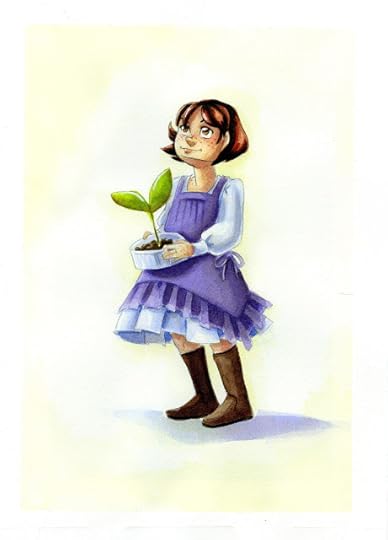 Arches, 140lb Cold Press, Pad BoundHave You Heard the Word?
Arches, 140lb Cold Press, Pad BoundHave You Heard the Word?
Ink Drop cafe is hosting a fanart contest to celebrate their one year launchiversary!
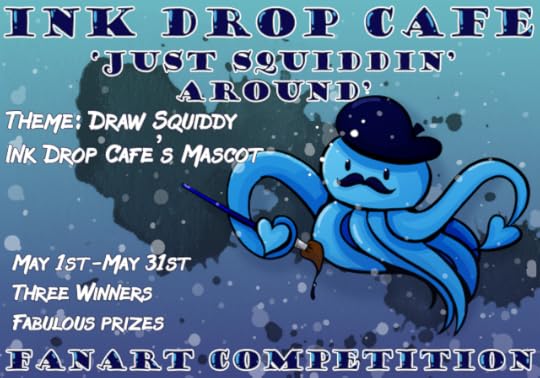
The rules and the theme are simple- we'd love to see how you draw Squiddy, our tea loving squid mascot! For a full list of rules, and information on how to enter, please visit Ink Drop Cafe!
The Verdict:
Arches is generally one of the first papers recommended by traditional watercolorists. It seems to have some batch issues, but in the past, Arches has been a predictable, high quality watercolor paper that yields vivid results and beautiful blends. My experiences with Arches have all been positive- from my printmaking years using BFK Reeves (a pleasure to print on, from lino to screenprint) to pad and block bound watercolor papers. For me, it's great for illustration and an excellent sometimes treat, as it's too expensive for comic pages, and details are frequently fuzzy.
It's probably very obvious that my watercolor style does not make me Arches' target demographic- my style does not make me the target demographic of ANY watercolor supply or paper company. Watercolor manufacturers in the US do not cater to illustration nor to comic artists, so it's up to us as illustrators and comic artists to find papers and products that suit our needs, regardless of whether these are the supplies other artists utilize. However, this also puts me in a unique position- few illustrators or comic artists review their supplies regularly. Most reviews are in fact written by those who wish to pursue watercolor in a traditional sense. I know this because for every review I write, I include a list of outside resources to help others continue their research, and I highly prize an educated dissenting opinion as it helps me refine my own.
So I hope the reviews I've shared here have been useful for those of you who love watercolor, but wish to use it for illustration or comics.
Outside Resources and Second Opinions:
Arches Site
Ahlstrom-Munksjo: Products
Wet Canvas- Arches
ColArt: Arches
ColArt: Our Story
EuroInvestor: ColArt Distributor of Arches Fine Art Papers
Arches Papers
Reviews:
Painting Watercolor: Arches Cold Press Watercolor Paper Review
Amazon Reviews- Arches ColdPress Sheets
Amazon Reviews-Arches Coldpress Blocks
Arches, the basic to compare watercolor papers
WetCanvas: Is Saunders Waterford Watercolor Paper Better Than Arches
Please consider donating to this blog or purchasing from Natto-shop (http://nattosoup.com/shop) if you want me to continue publishing quality content. All materials tested were purchased from my own pocket. Keep on Truckin' Nattosoup is not under any sponsorship.
Throughout this post, I share illustrations created on the types of Arches paper I've used, to give an overview of how their papers handle.
Papers discussed in this post:
Arches Watercolour 140lb Rough Press, Block BoundArches Watercolour 140lb Cold Press, Pad BoundArches Watercolour 300lb Cold Press, Block Bound, but removedArches Watercolour 140 lb Cold Press, Block Bound
 Arches 300lb Cold Press, originally block bound but removed for blueline printingBefore we get much further in this post, I'd like to clear something up.
Arches 300lb Cold Press, originally block bound but removed for blueline printingBefore we get much further in this post, I'd like to clear something up.The Misconception:
Arches is owned by Canson.
Those slightly more in the know might think Canson originally owned Arches, and now ColArts, Winsor and Newton's parent company, have acquired it.
The Truth:
Arches watercolor paper is produced by one mill in France, which was founded in 1492. Over the years, it has merged with three other mills to form a company called Arjomari, and in the 70's Ajomari acquired Canson, and produced papers for Canson's distribution. Recently, Canson has been acquired by Hamelin, and ColArts became the Arches distributor in 2017. ColArts handles Winsor and Newton, Liquitex, Reeves, Conte a Paris and several other art material manufacturers, and is owned by Lindengruppen, a Swedish business.
Arches is currently owned by Ahlstrom-Munksjo and this partneship would give Munksjo access to ColArt's worldwide network of distribution. Ahlstrom-Munksjo makes a variety of fiber based products- wallcoverings, tape backings, beverage and food packaging, fine art papers, and even electrotechnical papers.
Sources:
http://www.wetcanvas.com/forums/archive/index.php/t-1337443.html
http://www.colart.com/our-brands/arches.html
http://www.colart.com/our-story.html
http://www.euroinvestor.com/news/2016/12/15/munksjo-oyj-colart-sole-distributor-of-arches-fine-art-papers/13499213
Arches isn't just watercolor paper. The Arches mill produces fine art papers for oil and drawing, as well as papers for art publishers.
Arches manufactures two types of watercolor paper- Lavis Fidelis/En-Tout-Cas (a double sided watercolor paper- one side hot press, one side cold press, made of 25% cotton with gelatin sizing, which we will not discuss today as I haven't tried it), and Arches Aquarelle/Watercolour paper, which we ARE discussing today.
 Arches 140lb Cold Press, Pad Bound
Arches 140lb Cold Press, Pad BoundThe Stats:
100% cotton rag paper, machine madeGelatin sizedAvailable in Cold, Hot, and Rough pressAvailable in:Sheets- (hot, cold, and rough press, 140lb and 300lb)- 16"x20" (CP, 140lb only), 22"x30"Rolls- (90lb, cold press)- 44.5"x10 yards(140lb, cold press)-44.5"x10 yards(140lb, hot press)- 44.5"10 yards(156lb, hot press)- 51"x10 yards(140lb, rough)- 44.5"x10 yards(156lb, rough)- 51"x10 yardsBlocks (hot, cold, and rough press, 140lb, 20 sheets)- 3.9"x9.8", 5.9"x11.8", 7.9"x7.9", 7"x10", 8"x10", 9"x12", 10"x14", 11"x14", 12"x12", 12"x16", 14"x20", 16"x20", 18"x24"(cold press, 300lb, 10 sheets)- 9"x12", 10"x14", 12"x16"Pads (140lb, hot, cold, and rough) 9"x12", 10"x14", 11.7"x16.5"Available in Bright and Natural White
 Arches 140lb, Cold Press, Block Bound
Arches 140lb, Cold Press, Block BoundArches
Arches 9"x12" Coldpress Block, 140lb, 20 sheets- $36.99 on Amazon
Arches 9"x12" Coldpress Block, 140lb, 20 sheets-$25.16 on Blick
Arches 9"x12" Coldpress Block 300 lb, 10 sheets, $24.75 on Cheap Joes
L'Aquarelle Canson Heritage
Heritage Watercolor Block, 140lb, 9"x12", 20 sheets- $38.40 on Blick
Heritage Watercolor Block, 140lb, 9"x12", 20 sheets- $42.07on Amazon
Not available in 300lb
Canson Moulin du Roy
Moulin du Roy 9X12 Block, 140lb, 20 sheets- $21.18 on Amazon
Not available in 300lb
Kilimanjaro
9x12 coldpress block, 140lb, 20 sheets $21.09, only available from CheapJoes
9x12 coldpress pad, 300lb, 10 sheets, $21.69 only available from CheapJoes
Fluid 1009"x12" coldpress block, 140lb 15 sheets- 16.27 on Blick (bound on 2 sides)
Saunders Waterford9"x12" coldpress block, 140lb, 20 sheets-$30.98 on Blick9"x12", coldpress, block, 300lb, 23.68 on Blick
Stonehenge Aqua9"x12", coldpress, padbound, 140lb- $16.49 on Blick
Although Arches has gotten a reputation for being a bit pricey, when compared with comparable products, Arches is just about in the middle of the pack. While both Fluid 100 and Stonehenge Aqua perform quite well as watercolor papers, they may not offer the tooth and taut block options that the other papers on this list offer. I would say a good block of Arches is worth the investment, however many other artists have noticed issues with recent sheets and blocks. There have been complaints about areas of resist that won't accept water or pigment, and there's some speculation that this is due to changes in management and quality control as the Arches mill shifts ownership over the years. I have not encountered such a problem personally, but I know that if I did, I would find it very frustrating in a paper as expensive and lauded as Arches.
 Arches, 140lb Cold Press, Pad Bound
Arches, 140lb Cold Press, Pad BoundArches Watercolour 140lb Rough Press, Block BoundA very rough watercolor paper that feels similar to sandpaper, and may chew up brushes. I really love the texture on Arches Rough- it's very satisfying. The gum used to bind the paper to the block does an excellent job holding the paper taut. Paper does not buckle or cockle despite paper saturation, and should not need further stretching. Paper may be difficult to remove from block without knife. Paper accepts color well, and colors remain vivid after drying. Paper can accept multiple layers of color- both wet over wet and details. Paper may be difficult to ink on, given texture. Overall, a pleasant experience.Arches Watercolour 140lb Cold Press, Pad BoundPaper needs to be stretched or will buckle, especially if a lot of water is used. In my experience, slightly less tooth than the block version of the same color- this may be due to batch, as papers were purchased several years apart. Performs comparably with Moulin du Roy (I often can't tell the difference once the papers have been removed from their pads, if unlabeled), but is easier to find. Paper is a bit soft, and details may get fuzzy- not suitable for comics work in my experience. Paper accepts color well, allows for gentle subtle blending, and can handle multiple layers of water. Overall, a pleasant experience, and an easy paper to work with.Arches Watercolour 300lb Cold Press, Block Bound, but removedPaper is almost the width of illustration board- very sturdy paper. I needed to run my illustration through my printer, so paper was removed from block beforehand using a knife. Paper released printer ink upon stretching (not necessary, but made for easier handling, and I intended on using a lot of water for this illustration). Brusho did not disperse as much as I had wanted, but colors are still very vibrant (so vibrant that the scan does not do the final piece justice- it's beautiful in person). 300lb block bound CP seems to have more texture than 140lb Pad bound CP- might be batch differences.Arches Watercolour 140 lb Cold Press, Block BoundThe gum used to bind the paper to the block does an excellent job holding the paper taut. Paper does not buckle or cockle despite paper saturation, and should not need further stretching. Paper may be difficult to remove from block without knife. Paper accepts color well, and colors remain vivid after drying. Paper can accept multiple layers of color- both wet over wet and details. Paper accepts ink from brushpen well. Overall, a pleasant experience.
 Arches, 140lb Cold Press, Pad BoundHave You Heard the Word?
Arches, 140lb Cold Press, Pad BoundHave You Heard the Word?Ink Drop cafe is hosting a fanart contest to celebrate their one year launchiversary!

The rules and the theme are simple- we'd love to see how you draw Squiddy, our tea loving squid mascot! For a full list of rules, and information on how to enter, please visit Ink Drop Cafe!
The Verdict:
Arches is generally one of the first papers recommended by traditional watercolorists. It seems to have some batch issues, but in the past, Arches has been a predictable, high quality watercolor paper that yields vivid results and beautiful blends. My experiences with Arches have all been positive- from my printmaking years using BFK Reeves (a pleasure to print on, from lino to screenprint) to pad and block bound watercolor papers. For me, it's great for illustration and an excellent sometimes treat, as it's too expensive for comic pages, and details are frequently fuzzy.
It's probably very obvious that my watercolor style does not make me Arches' target demographic- my style does not make me the target demographic of ANY watercolor supply or paper company. Watercolor manufacturers in the US do not cater to illustration nor to comic artists, so it's up to us as illustrators and comic artists to find papers and products that suit our needs, regardless of whether these are the supplies other artists utilize. However, this also puts me in a unique position- few illustrators or comic artists review their supplies regularly. Most reviews are in fact written by those who wish to pursue watercolor in a traditional sense. I know this because for every review I write, I include a list of outside resources to help others continue their research, and I highly prize an educated dissenting opinion as it helps me refine my own.
So I hope the reviews I've shared here have been useful for those of you who love watercolor, but wish to use it for illustration or comics.
Outside Resources and Second Opinions:
Arches Site
Ahlstrom-Munksjo: Products
Wet Canvas- Arches
ColArt: Arches
ColArt: Our Story
EuroInvestor: ColArt Distributor of Arches Fine Art Papers
Arches Papers
Reviews:
Painting Watercolor: Arches Cold Press Watercolor Paper Review
Amazon Reviews- Arches ColdPress Sheets
Amazon Reviews-Arches Coldpress Blocks
Arches, the basic to compare watercolor papers
WetCanvas: Is Saunders Waterford Watercolor Paper Better Than Arches
Please consider donating to this blog or purchasing from Natto-shop (http://nattosoup.com/shop) if you want me to continue publishing quality content. All materials tested were purchased from my own pocket. Keep on Truckin' Nattosoup is not under any sponsorship.

Published on May 24, 2018 13:00
May 21, 2018
Kilimanjaro Coldpress Watercolor Paper Review
I've already reviewed the 140lb Kilimanjaro cold press paper, I'm revisiting Kilimanjaro as a way to encourage illustrators to give it a try!
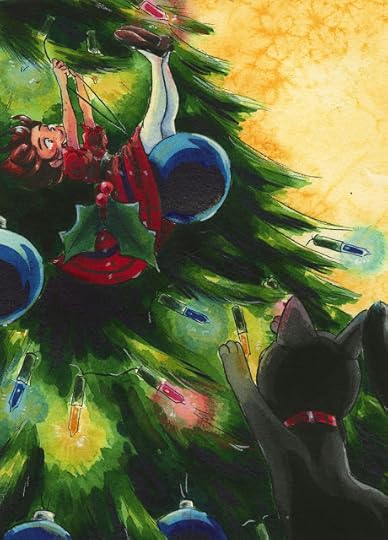 Christmas 2017 Illustration, Inked with Sakura Pigma FB
Christmas 2017 Illustration, Inked with Sakura Pigma FB
Note: All illustrations used in this post were painted on Kilimanjaro Original Bright White 300lb watercolor paper.
Recently, I thought it would be helpful to write reviews for some of my favorite or frequently used cotton rag watercolor papers. I feel like as an illustrator and comic artist, I have something unique and interesting to contribute to the watercolor paper conversation, and hope my experiences may be useful to other watercolorists, illustrators, and comic artists.
Other Watercolor Paper Reviews I Recommend:
Canson Moulin du RoyCanson L'Aquarelle HeritageFluid 100 Watercolor PaperKilimanjaro 140lb Watercolor Paper
The Stats:
Cotton RagCold PressAvailable in blocks, paintbooks, pads, and sheetsArchivalAcid FreeAvailable in sizes: 4"x6", 15"x22", 12"x16", 10"x14", 9"x12"140lb and 300lbAvailable in two colors- Bright White and Natural WhiteNatural White is Acid Free, pH neutral, buffered, interally sized- this may not be the case for for Bright White
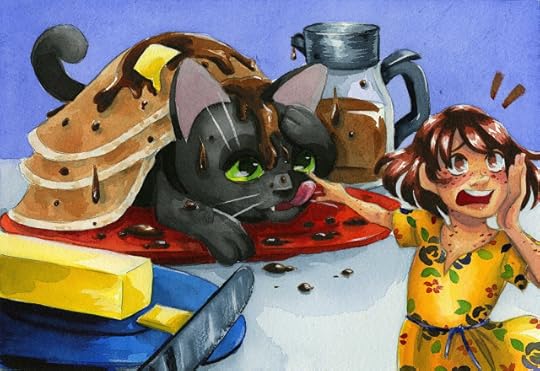 Penciled 1 Year Launchiversary watercolor illustration
Penciled 1 Year Launchiversary watercolor illustration
Kilimanjaro is an affordable, store brand, cotton-rag watercolor paper that is only available from Cheap Joes Art Stuff, a regional chain of art supply stores. It works well for both inked and penciled watercolor illustrations, has a nice surface texture, and takes color well.
The 300lb watercolor paper is a little tricky for my Canon Pixma Pro 9000 MK II to handle from front-loading- it generally leaves black marks when I print my bluelines. These are not noticeable in the finished illustrations but were originally visible on all of the illustrations used in this post. My Pixma Pro 9000 has been resuscitated from the verge of death multiple times so this may be an issue with my printer, and not with the width of the paper itself. Otherwise, my printer has no issues handling this thicker paper.
Kilimanjaro 300lb paper is slightly thicker than illustration board, and for most artists, should not require stretching. I paint really wet, so I usually stretch my watercolor paper first, and 300lb paper is no exception. Stretching the paper helps dissolve the printed blueline guides, but you may not find it necessary.
I work with both ink and pencil on Kilimanjaro, generally inking with a Sakura Pigma FB or Pentel Pigment brushpen, as both are waterproof once dry.
300lb Kilimanjaro is available in:
Sheets- Natural and Bright White- 11"x15", 22"x30"
Pads- Natural and Bright White- 9"x12", 11"x14"
Paintbooks- 9"x12", 10"x5.5", 12"x9"
But not available in blocks.
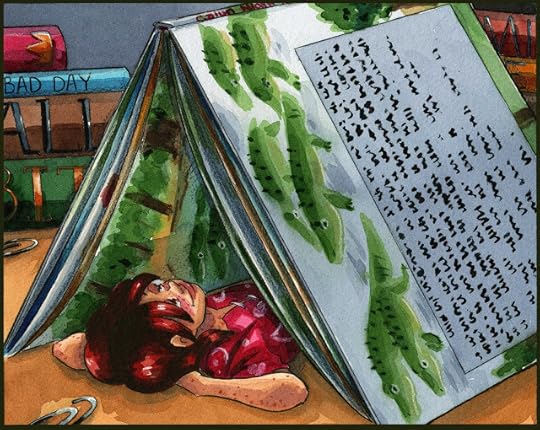 Inked ALAC watercolor illustration
Inked ALAC watercolor illustration
I find Kilimanjaro an excellent alternative for Arches for my illustration needs. It's got nice texture and tooth, stays open long enough for nice blends but not open so long that the painting becomes muddy, and is quite forgiving. Kilimanjaro is responsive to a variety of techniques, and the cold press does not have so much texture that it's difficult to ink or paint details.
L'Aquarelle Canson Heritage
Heritage Watercolor Block, 140lb, 9"x12", 20 sheets- $38.40 on Blick
Heritage Watercolor Block, 140lb, 9"x12", 20 sheets- $42.07on Amazon
Not available in 300lb
Arches
Arches 9"x12" Coldpress Block, 140lb, 20 sheets- $36.99 on Amazon
Arches 9"x12" Coldpress Block, 140lb, 20 sheets-$25.16 on Blick
Arches 9"x12" Coldpress Block 300 lb, 10 sheets, $24.75 on Cheap Joes
Canson Moulin du Roy
Moulin du Roy 9X12 Block, 140lb, 20 sheets- $21.18 on Amazon
Not available in 300lb
Kilimanjaro
9x12 coldpress block, 140lb, 20 sheets $21.09, only available from CheapJoes
9x12 coldpress pad, 300lb, 10 sheets, $21.69 only available from CheapJoes
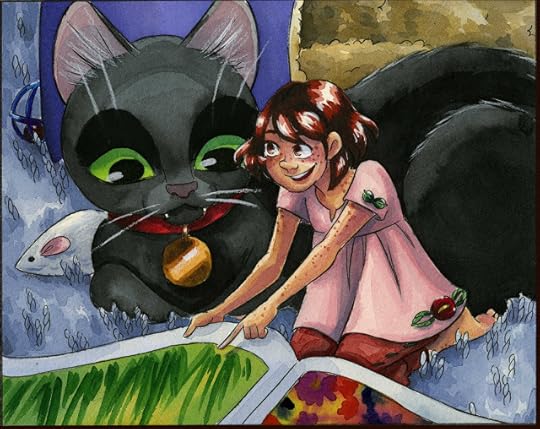 Inked ALAC watercolor Illustration
Inked ALAC watercolor Illustration
The Verdict:
I've used Kilimanjaro 300lb watercolor paper for a while now, and find it a responsive, affordable cotton rag watercolor paper that is fairly affordable and very enjoyable to use. While I would not recommend 300lb for practice, nor do I think its something every watercolor illustrator needs, I enjoyed trying it, as I'm primarily used to 140lb papers.
I think Kilimanjaro watercolor paper is a great, affordable alternative to Arches or Moulin du Roy. It's an affordable cotton rag paper that behaves predictably and consistently and is a fantastic option for illustrators who enjoy quality papers but don't have the need or means to pay for Arches. I highly recommend you give it a try!
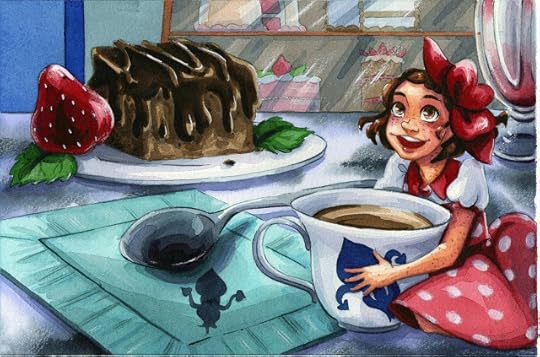 Penciled Ink Drop Cafe Launch Anniversary Illustration
Penciled Ink Drop Cafe Launch Anniversary Illustration
Tutorials and Demonstrations on Kilimanjaro Paper
Swinging from the Branches- Inking My 2017 Christmas Card
Swinging from the Branches- Painting My 2017 Christmas Card:
Happy Anniversary! 7 Inch Kara 1 Year Launch Birthday:
Curled Up In A Good Book:
Read to Your Pets Watercolor Tutorial:
Have You Heard the Word?
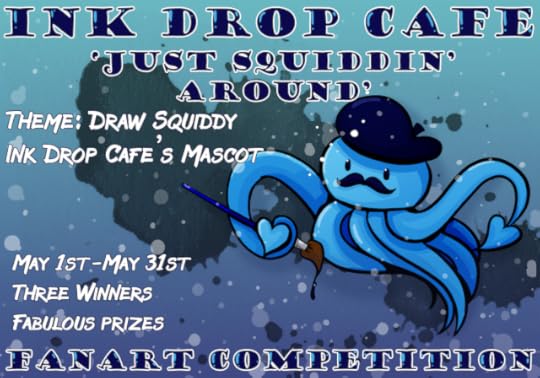
Ink Drop Cafe is hosting a fanart contest! To enter, just draw our adorable squid mascot, Squiddy, and you can win wonderful prizes such as comics, prints, or charms! For more information, visit the Ink Drop Cafe site!
Second Opinions and Outside Resources
Scratchmade Journal: Comparing 4 Favorite Watercolor Brands
Scratchmade Journal: Five Things You May Not Know About Watercolor Paper
Handprint- Kilimanjaro
WetCanvas- Kilimanjaro Natural White
Please consider donating to this blog or purchasing from Natto-shop (http://nattosoup.com/shop) if you want me to continue publishing quality content. All materials tested were purchased from my own pocket. Keep on Truckin' Nattosoup is not under any sponsorship.
 Christmas 2017 Illustration, Inked with Sakura Pigma FB
Christmas 2017 Illustration, Inked with Sakura Pigma FBNote: All illustrations used in this post were painted on Kilimanjaro Original Bright White 300lb watercolor paper.
Recently, I thought it would be helpful to write reviews for some of my favorite or frequently used cotton rag watercolor papers. I feel like as an illustrator and comic artist, I have something unique and interesting to contribute to the watercolor paper conversation, and hope my experiences may be useful to other watercolorists, illustrators, and comic artists.
Other Watercolor Paper Reviews I Recommend:
Canson Moulin du RoyCanson L'Aquarelle HeritageFluid 100 Watercolor PaperKilimanjaro 140lb Watercolor Paper
The Stats:
Cotton RagCold PressAvailable in blocks, paintbooks, pads, and sheetsArchivalAcid FreeAvailable in sizes: 4"x6", 15"x22", 12"x16", 10"x14", 9"x12"140lb and 300lbAvailable in two colors- Bright White and Natural WhiteNatural White is Acid Free, pH neutral, buffered, interally sized- this may not be the case for for Bright White
 Penciled 1 Year Launchiversary watercolor illustration
Penciled 1 Year Launchiversary watercolor illustrationKilimanjaro is an affordable, store brand, cotton-rag watercolor paper that is only available from Cheap Joes Art Stuff, a regional chain of art supply stores. It works well for both inked and penciled watercolor illustrations, has a nice surface texture, and takes color well.
The 300lb watercolor paper is a little tricky for my Canon Pixma Pro 9000 MK II to handle from front-loading- it generally leaves black marks when I print my bluelines. These are not noticeable in the finished illustrations but were originally visible on all of the illustrations used in this post. My Pixma Pro 9000 has been resuscitated from the verge of death multiple times so this may be an issue with my printer, and not with the width of the paper itself. Otherwise, my printer has no issues handling this thicker paper.
Kilimanjaro 300lb paper is slightly thicker than illustration board, and for most artists, should not require stretching. I paint really wet, so I usually stretch my watercolor paper first, and 300lb paper is no exception. Stretching the paper helps dissolve the printed blueline guides, but you may not find it necessary.
I work with both ink and pencil on Kilimanjaro, generally inking with a Sakura Pigma FB or Pentel Pigment brushpen, as both are waterproof once dry.
300lb Kilimanjaro is available in:
Sheets- Natural and Bright White- 11"x15", 22"x30"
Pads- Natural and Bright White- 9"x12", 11"x14"
Paintbooks- 9"x12", 10"x5.5", 12"x9"
But not available in blocks.
 Inked ALAC watercolor illustration
Inked ALAC watercolor illustrationI find Kilimanjaro an excellent alternative for Arches for my illustration needs. It's got nice texture and tooth, stays open long enough for nice blends but not open so long that the painting becomes muddy, and is quite forgiving. Kilimanjaro is responsive to a variety of techniques, and the cold press does not have so much texture that it's difficult to ink or paint details.
L'Aquarelle Canson Heritage
Heritage Watercolor Block, 140lb, 9"x12", 20 sheets- $38.40 on Blick
Heritage Watercolor Block, 140lb, 9"x12", 20 sheets- $42.07on Amazon
Not available in 300lb
Arches
Arches 9"x12" Coldpress Block, 140lb, 20 sheets- $36.99 on Amazon
Arches 9"x12" Coldpress Block, 140lb, 20 sheets-$25.16 on Blick
Arches 9"x12" Coldpress Block 300 lb, 10 sheets, $24.75 on Cheap Joes
Canson Moulin du Roy
Moulin du Roy 9X12 Block, 140lb, 20 sheets- $21.18 on Amazon
Not available in 300lb
Kilimanjaro
9x12 coldpress block, 140lb, 20 sheets $21.09, only available from CheapJoes
9x12 coldpress pad, 300lb, 10 sheets, $21.69 only available from CheapJoes
 Inked ALAC watercolor Illustration
Inked ALAC watercolor Illustration
The Verdict:
I've used Kilimanjaro 300lb watercolor paper for a while now, and find it a responsive, affordable cotton rag watercolor paper that is fairly affordable and very enjoyable to use. While I would not recommend 300lb for practice, nor do I think its something every watercolor illustrator needs, I enjoyed trying it, as I'm primarily used to 140lb papers.
I think Kilimanjaro watercolor paper is a great, affordable alternative to Arches or Moulin du Roy. It's an affordable cotton rag paper that behaves predictably and consistently and is a fantastic option for illustrators who enjoy quality papers but don't have the need or means to pay for Arches. I highly recommend you give it a try!
 Penciled Ink Drop Cafe Launch Anniversary Illustration
Penciled Ink Drop Cafe Launch Anniversary IllustrationTutorials and Demonstrations on Kilimanjaro Paper
Swinging from the Branches- Inking My 2017 Christmas Card
Swinging from the Branches- Painting My 2017 Christmas Card:
Happy Anniversary! 7 Inch Kara 1 Year Launch Birthday:
Curled Up In A Good Book:
Read to Your Pets Watercolor Tutorial:
Have You Heard the Word?

Ink Drop Cafe is hosting a fanart contest! To enter, just draw our adorable squid mascot, Squiddy, and you can win wonderful prizes such as comics, prints, or charms! For more information, visit the Ink Drop Cafe site!
Second Opinions and Outside Resources
Scratchmade Journal: Comparing 4 Favorite Watercolor Brands
Scratchmade Journal: Five Things You May Not Know About Watercolor Paper
Handprint- Kilimanjaro
WetCanvas- Kilimanjaro Natural White
Please consider donating to this blog or purchasing from Natto-shop (http://nattosoup.com/shop) if you want me to continue publishing quality content. All materials tested were purchased from my own pocket. Keep on Truckin' Nattosoup is not under any sponsorship.

Published on May 21, 2018 13:00
May 17, 2018
Canson's L'Aquarell Heritage Review
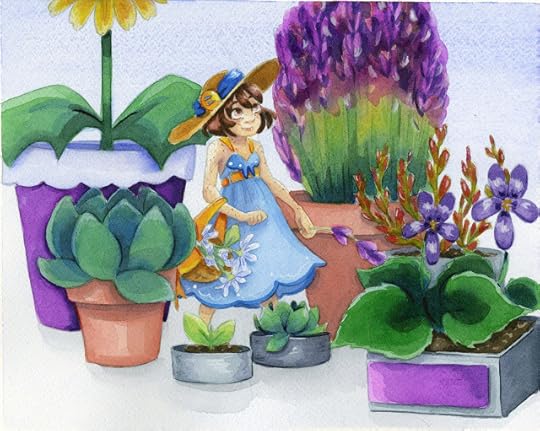
Today's review is for Canson's L'Aquarell Heritage watercolor paper, another frequent request from readers. L'Aquarelle Heritage seems to have taken the place of Moulin du Roy, and is far easier to find in a variety of art stores.
Heritage L'Aquarell is available in Rough, Cold, and Hot press, but we're looking at 140lb Cold Press in today's review.
For a glossary of common watercolor terms, please check out this post!For common watercolor paper terms and types, check out this post!For recommendations on watercolor papers for comics, check this post out.
Note: Illustrations in this post were painted on Heritage L'Aquarelle 9x12, 140lb coldpress paper.
The Stats:
Machine made using a mould
Cold, Hot, and Rough Press
140lb and 300lb
Cotton Rag
Sheet- 56 cm x 76 cm
Roll- 1.52 cm x 4.57 m
Top bound pad- 23 cm x 31 cm, 26 cm x 36 cm
Block- 23 cm x 31 cm, 26 cm x 36 cm, 31 cm x 41 cm, 36 cm x 51 cm
Acid free
No optical brighteners added
Where to Buy: Amazon, Blick, Jerry's Artarama
Starch Sized (not gelatin sized)
At one point, Canson acted as a distributor for Arches papers, a very popular choice for watercolor artists. Arches has since left Canson and is now distributed by Col-Arts (Winsor and Newton's parent company) and Canson has launched L'Aquarelle/L'Aquarell (I've seen it spelled both ways, but I assume the proper spelling is the feminine aquarelle) Heritage in its place. Some claim that L'Aquarelle handles just like Arches- I really think that boils down to how you handle your watercolor, and your experience may vary.
L'Aquarelle Canson Heritage
Heritage Watercolor Block, 140lb, 9"x12", 20 sheets- $38.40 on Blick
Heritage Watercolor Block, 140lb, 9"x12", 20 sheets- $42.07on Amazon
Arches
Arches 9x12 Coldpress Block, 140lb, 20 sheets- $36.99 on Amazon
Arches 9x12 Coldpress Block, 140lb, 20 sheets-$25.16 on Blick
Canson Moulin du Roy
Moulin du Roy 9X12 Block, 140lb, 20 sheets- $21.18 on Amazon
L'Aquarelle Heritage is much easier to find than Moulin du Roy, but I wouldn't consider it an apt replacement. I find the longer open time frustrating and struggle with fuzzy, bleeding lines when trying to apply fine detail.
When toning paper and working with large washes, I find my colors end up muddier than on similar cotton rag artist papers. I find the texture of the paper to be too uniform as well. Although I only use handmade papers occasionally, I do prefer a bit of texture to my watercolor papers, and will occasionally paint on rough press.
I use L'Aquarelle Heritage infrequently, as it's a struggle to get it to handle the way I wish. When painting an illustration where I need reliable results and predictable handling, I'll reach for Kilimanjaro or Arches over L'Aquarelle Heritage.
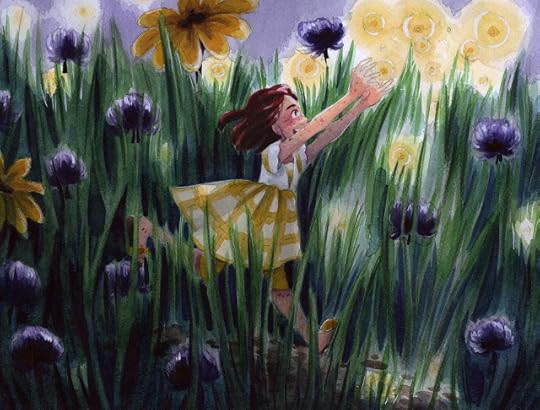
I used the above illustration in my post Pushing Through The Ugly. The post is about pushing past the worst to create something truly good, but I feel fighting with the quirks of the L'Aquarelle Heritage paper contributed to a lot of that ugly.
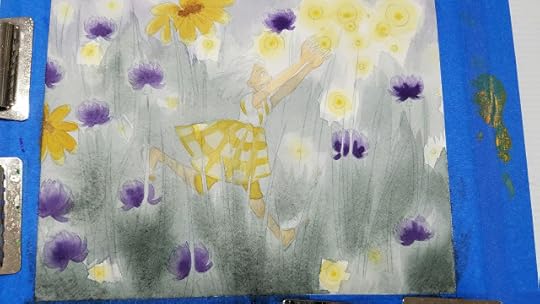
The Verdict:
Despite both being Canson products, I find L'Aquarelle Heritage temperamental and somewhat difficult to use compared to Moulin du Roy. I struggle to achieve the desired effects, and find my paintings often end up muddy or difficult to control. This could be due to the fact that L'Aquarelle Heritage is designed to stay open and workable longer, and is also designed for lifting- two properties that do not always lend themselves well to the type of illustration I do.
Compared to other cotton rag watercolor papers, I prefer Kilimanjaro, Moulin du Roy, Fluid 100, and Arches Cold Press to L'Aquarelle Heritage.
Not every paper is designed as a general use watercolor paper, or designed to please every artist. I'm not a fan of Canson's L'Aquarelle Heritage, and don't enjoy using it for my illustrations.
Resources and Second Opinions:
Open Canvas: Has anyone used the new Canson Heritage Paper?
Canson Heritage- An Exceptional Paper and We Prove It To You
L'Aquarelle Canson Heritage- Comparative Test- Rendering
L'Aquarelle Canson Heritage- Comparative Test- Feeling
L'Aquarelle Canson Heritage-Comparative Test-Lifting
L'Aquarelle Canson Heritage-Comparative Test-Lifting
Blick Reviews: L'Aquarelle Canson Heritage
Canson Heritage- The Arches Killer
The Art Cart- Its Finally Here: L'Aquarelle Canson Heritage Watercolor Paper
Jackson's: Trying Out Canson Heritage Watercolor Paper
Please consider donating to this blog or purchasing from Natto-shop (http://nattosoup.com/shop) if you want me to continue publishing quality content. All materials tested were purchased from my own pocket. Keep on Truckin' Nattosoup is not under any sponsorship.

Published on May 17, 2018 13:00
May 14, 2018
Funding the Future of Comics: NATTO Scholarship 2017 Retrospective
The NATTO scholarship 2018 is going strong, but I thought now would be a good time to revisit the first year of the scholarship. I contribute what I can to charities, but Going Merry made a good case for giving directly to students. Nattosoup Studio has interviewed artists who have received funding to aide their comic work and it has sometimes launched their careers. But many of those scholarships have dried up, so last year seemed like a perfect time to launch my own scholarship to promote sequential art.
Where to Begin?Getting started was a manual process. I created an account on Going Merry which was straight-forward and free, but found there was and still isn't an interface to create a scholarship on the site. So I emailed the creator, Charlie Maynard, and he got the ball rolling. He was easy to work with; he asked what my goals were for the scholarship, was clear on what role Going Merry would play, and helped answer questions I had about running a scholarship since I was new to this. After 8 rounds of emails and a short call I had a live scholarship in two weeks and felt confident things would proceed. Some of that time was spent being distracted by life or creating assets, but I think it came together in a reasonable amount of time.
You should keep in mind that Going Merry does not promote scholarships- that part is up to you.
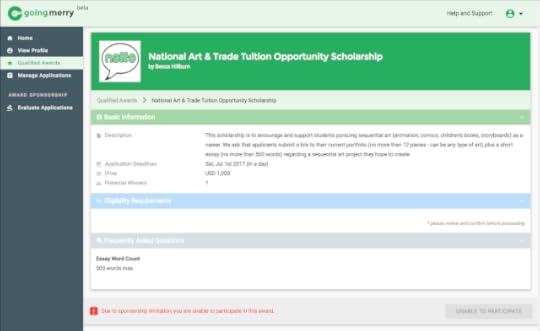 Overview of the scholarship on Going Merry for approval.How Do I Reach Students?The biggest obstacle we faced was launching the scholarship so late in the school year. By May 22nd, colleges had let out and high schools were sending their seniors off. So I focused my efforts on contacting other artists to spread the word about the scholarship. I wrote a blog post and created a whimsical Youtube video to garner attention. I asked a variety of people (art educators, bloggers, artists, and podcasters) through social media and emails (directly and indirectly) to signal boost. I got some response. I'm not sure if I just wasn't reaching people, if they didn't see a benefit in sharing the opportunity, or if they were skeptical of the scholarship, but it was difficult to get traction.
Overview of the scholarship on Going Merry for approval.How Do I Reach Students?The biggest obstacle we faced was launching the scholarship so late in the school year. By May 22nd, colleges had let out and high schools were sending their seniors off. So I focused my efforts on contacting other artists to spread the word about the scholarship. I wrote a blog post and created a whimsical Youtube video to garner attention. I asked a variety of people (art educators, bloggers, artists, and podcasters) through social media and emails (directly and indirectly) to signal boost. I got some response. I'm not sure if I just wasn't reaching people, if they didn't see a benefit in sharing the opportunity, or if they were skeptical of the scholarship, but it was difficult to get traction.
I hadn't expected sharing the scholarship to be difficult (it's $1000 for 30 minutes of time!), but we managed to get 18 fantastic applicants by July 1st. When we launched we were shooting for between 10 and 100 applicants, so we were on the low end. But there were so many strong portfolios featuring wonderful illustration work, amazing animation, and creative comics.
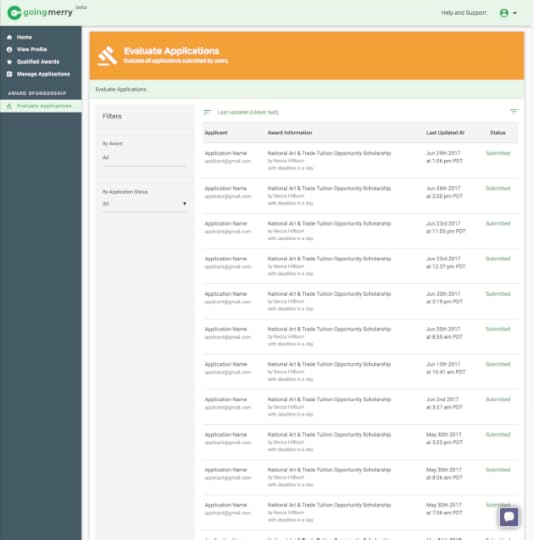 Reviewing applications on Going Merry in 2017.Picking a RecipientI was able to review the applicants through Going Merry's application portal, but they've since moved away from that to a PDF offline format. I didn't see a good place to take notes on applicants, so I just used a Trello board since it's easier to have images and readable notes than a spreadsheet. It took a few weeks of deliberation—July can be hectic for me—but I contacted the recipient and made the announcement. We were hoping to have some information on Eliana Falcón at the time of her winning, but we just got busy, and wasn't able to get those details until we announced the scholarship for 2018.
Reviewing applications on Going Merry in 2017.Picking a RecipientI was able to review the applicants through Going Merry's application portal, but they've since moved away from that to a PDF offline format. I didn't see a good place to take notes on applicants, so I just used a Trello board since it's easier to have images and readable notes than a spreadsheet. It took a few weeks of deliberation—July can be hectic for me—but I contacted the recipient and made the announcement. We were hoping to have some information on Eliana Falcón at the time of her winning, but we just got busy, and wasn't able to get those details until we announced the scholarship for 2018.
What Would I Change?$1000 is the minimum most students will apply for. Obviously their time is valuable, and chances are they won't be the recipient of the scholarship, so in 2018 we decided to expand the awards to a 2nd place ($500) and 3rd place ($250) to further encourage students who otherwise might not have the confidence.
It's hard to get a scholarship going on grass roots alone. This go-around I created a press release and contacted comic news outlets, local news outlets, high schools, colleges, conventions, and more podcasters to get enough syndication to reach a broader audience. Maybe at some point I'll consider paying to advertise the scholarship, but I'd prefer to have those funds go to students than social media platforms.
I would love to be able to write-off the NATTO scholarship on my taxes, but Going Merry doesn't currently have the legal infrastructure to offer this and I don't either obviously. I plan to stick with the service, if for no other reason it might encourage more people to create scholarships, but this is the main disappointment for me in the process.
How Do You Start a Scholarship?If you aren't concerned with tax write-offs, nothing is stopping you from creating an online form to accept submissions, promoting yourself, and mailing a check to the recipient. Going Merry is certainly helpful for a sense of legitimacy and for verification the applicants are students / citizens, but if those things aren't a priority for you, it may not be worth the 3% fee they charge for hosting.
So if you have the financial means, around 25 hours of free time, and a desire to help educate the next generation, either sign up for Going Merry or create a Google Form and get going! I definitely recommend you create assets to promote the scholarship. Having a clear name (a difficult task!), possibly a logo, and some graphic assets which are easy to share on social media can definitely have an effect on the visibility.
Finally, while having criteria for your scholarship is a wonderful means to promote your cause, if the requirements are too strict, you may not get enough applicants to justify formally creating a scholarship.
Please consider donating to this blog or purchasing from Natto-shop (http://nattosoup.com/shop) if you want me to continue publishing quality content. All materials tested were purchased from my own pocket. Keep on Truckin' Nattosoup is not under any sponsorship.
Where to Begin?Getting started was a manual process. I created an account on Going Merry which was straight-forward and free, but found there was and still isn't an interface to create a scholarship on the site. So I emailed the creator, Charlie Maynard, and he got the ball rolling. He was easy to work with; he asked what my goals were for the scholarship, was clear on what role Going Merry would play, and helped answer questions I had about running a scholarship since I was new to this. After 8 rounds of emails and a short call I had a live scholarship in two weeks and felt confident things would proceed. Some of that time was spent being distracted by life or creating assets, but I think it came together in a reasonable amount of time.
You should keep in mind that Going Merry does not promote scholarships- that part is up to you.
 Overview of the scholarship on Going Merry for approval.How Do I Reach Students?The biggest obstacle we faced was launching the scholarship so late in the school year. By May 22nd, colleges had let out and high schools were sending their seniors off. So I focused my efforts on contacting other artists to spread the word about the scholarship. I wrote a blog post and created a whimsical Youtube video to garner attention. I asked a variety of people (art educators, bloggers, artists, and podcasters) through social media and emails (directly and indirectly) to signal boost. I got some response. I'm not sure if I just wasn't reaching people, if they didn't see a benefit in sharing the opportunity, or if they were skeptical of the scholarship, but it was difficult to get traction.
Overview of the scholarship on Going Merry for approval.How Do I Reach Students?The biggest obstacle we faced was launching the scholarship so late in the school year. By May 22nd, colleges had let out and high schools were sending their seniors off. So I focused my efforts on contacting other artists to spread the word about the scholarship. I wrote a blog post and created a whimsical Youtube video to garner attention. I asked a variety of people (art educators, bloggers, artists, and podcasters) through social media and emails (directly and indirectly) to signal boost. I got some response. I'm not sure if I just wasn't reaching people, if they didn't see a benefit in sharing the opportunity, or if they were skeptical of the scholarship, but it was difficult to get traction.I hadn't expected sharing the scholarship to be difficult (it's $1000 for 30 minutes of time!), but we managed to get 18 fantastic applicants by July 1st. When we launched we were shooting for between 10 and 100 applicants, so we were on the low end. But there were so many strong portfolios featuring wonderful illustration work, amazing animation, and creative comics.
 Reviewing applications on Going Merry in 2017.Picking a RecipientI was able to review the applicants through Going Merry's application portal, but they've since moved away from that to a PDF offline format. I didn't see a good place to take notes on applicants, so I just used a Trello board since it's easier to have images and readable notes than a spreadsheet. It took a few weeks of deliberation—July can be hectic for me—but I contacted the recipient and made the announcement. We were hoping to have some information on Eliana Falcón at the time of her winning, but we just got busy, and wasn't able to get those details until we announced the scholarship for 2018.
Reviewing applications on Going Merry in 2017.Picking a RecipientI was able to review the applicants through Going Merry's application portal, but they've since moved away from that to a PDF offline format. I didn't see a good place to take notes on applicants, so I just used a Trello board since it's easier to have images and readable notes than a spreadsheet. It took a few weeks of deliberation—July can be hectic for me—but I contacted the recipient and made the announcement. We were hoping to have some information on Eliana Falcón at the time of her winning, but we just got busy, and wasn't able to get those details until we announced the scholarship for 2018.What Would I Change?$1000 is the minimum most students will apply for. Obviously their time is valuable, and chances are they won't be the recipient of the scholarship, so in 2018 we decided to expand the awards to a 2nd place ($500) and 3rd place ($250) to further encourage students who otherwise might not have the confidence.
It's hard to get a scholarship going on grass roots alone. This go-around I created a press release and contacted comic news outlets, local news outlets, high schools, colleges, conventions, and more podcasters to get enough syndication to reach a broader audience. Maybe at some point I'll consider paying to advertise the scholarship, but I'd prefer to have those funds go to students than social media platforms.
I would love to be able to write-off the NATTO scholarship on my taxes, but Going Merry doesn't currently have the legal infrastructure to offer this and I don't either obviously. I plan to stick with the service, if for no other reason it might encourage more people to create scholarships, but this is the main disappointment for me in the process.
How Do You Start a Scholarship?If you aren't concerned with tax write-offs, nothing is stopping you from creating an online form to accept submissions, promoting yourself, and mailing a check to the recipient. Going Merry is certainly helpful for a sense of legitimacy and for verification the applicants are students / citizens, but if those things aren't a priority for you, it may not be worth the 3% fee they charge for hosting.
So if you have the financial means, around 25 hours of free time, and a desire to help educate the next generation, either sign up for Going Merry or create a Google Form and get going! I definitely recommend you create assets to promote the scholarship. Having a clear name (a difficult task!), possibly a logo, and some graphic assets which are easy to share on social media can definitely have an effect on the visibility.
Finally, while having criteria for your scholarship is a wonderful means to promote your cause, if the requirements are too strict, you may not get enough applicants to justify formally creating a scholarship.
Please consider donating to this blog or purchasing from Natto-shop (http://nattosoup.com/shop) if you want me to continue publishing quality content. All materials tested were purchased from my own pocket. Keep on Truckin' Nattosoup is not under any sponsorship.

Published on May 14, 2018 13:00
May 10, 2018
Canson Moulin Du Roy Review

Today we're taking a look at Canson's Moulin du Roy watercolor paper! This is by popular request, and I've mentioned using and enjoying Moulin du Roy on Twitter several times in the past. Moulin du Roy is available in both hot and cold press, but today's review focuses on their cold press offering.
For a glossary of common watercolor terms, please check out this post!For common watercolor paper terms and types, check out this post!For recommendations on watercolor papers for comics, check this post out.
Note: All illustrations in this post were painted on Canson Moulin du Roy 24cm x 32cm paper.
The Stats:Available in tape-bound pad, roll, or on blocksAvailable in Cold, Rough, and Hot Press100% Cottonrag Watercolor PaperMachine made using moulds140lb and 300 lb weightsAvailable through Amazon, Jackson's ArtSizes Available: Sheet- 56cm x 76cmRoll: 1.30m x 9.15mBlock: 23cm x 30.5cm and 30.5cm x 45.5cmPad, top glued: 24cm x 32cm and 30cm x 40cmAcid free, naturally whiteMade without bleaching agents

I've used Canson's Moulin du Roy for a few years now, particularly for my larger watercolor illustrations. Although it's a bit pricier than cellulose papers, it's an affordable alternative to Arches that may be appealing to illustrators who work with pad and block bound papers:
Moulin du Roy 9X12 Block, 140lb, 20 sheets- $21.18 on AmazonArches 9x12 Coldpress Block, 140lb, 20 sheets- $36.99 on AmazonArches 9x12 Coldpress Block, 140lb, 20 sheets-$25.16 on Blick
Compared to Arches, Moulin du Roy is soft and a bit fabric like. Colors dry a bit muted, and may require additional layers. Otherwise, I find it quite comparable, and use it as an alternative to Arches for larger illustration sizes.
Although there are some claims that this handles similarly to handmade papers, Moulin du Roy does not handle anything like the handmade watercolor papers I've had the pleasure of trying (Shizen and Khaldi).
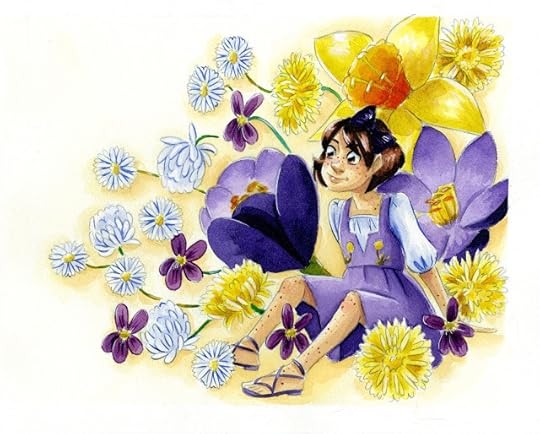 Moulin du Roy is capable of soft, subtle blends, and handles layers beautifully. If you're working on 140lb Moulin du Roy watercolor paper, I recommend stretching or stabilizing your paper first, or working on block bound paper.
Moulin du Roy is capable of soft, subtle blends, and handles layers beautifully. If you're working on 140lb Moulin du Roy watercolor paper, I recommend stretching or stabilizing your paper first, or working on block bound paper.Cold Press Moulin du Roy has minimal, fairly soft tooth, and may be suitable for those who do not enjoy aggressive tooth on watercolor papers. It's a fairly soft paper, and may not take fine detail in watercolor well. It may also be too soft for heavy graphite work, and may not take sketching, erasing, and revision well.
I'm able to run sheets of Canson Moulin du Roy through my large Canon Pixma Pro 9000 Mk II (this seems to be the new version) printer in order to print water soluble bluelines, making this an excellent paper option for artists who enjoy working with one foot in the digital realm, or for artists who work in successive stages.
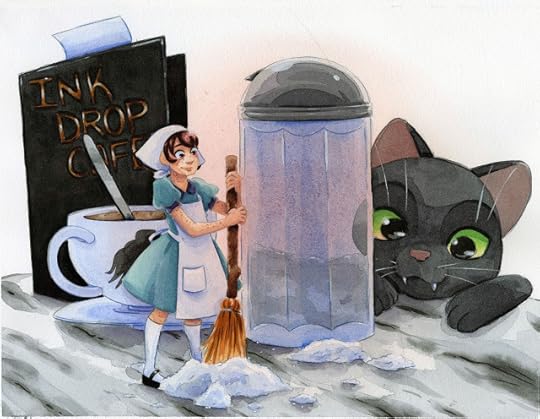
Verdict:
Moulin du Roy (Roi) translates to Mill of the King. It seems that many artists in the fine art vein find this paper inferior to Arches, although I've also gotten feedback that Arches has had a recent bout with bad batches. When it comes to watercolor paper, its best to try it for yourself- if you'd like to try Moulin du Roy on the cheap, you can request a sample at your local mom and pop art supply store, or write to Canson to request a sample.
I really enjoy painting on Moulin du Roy. I find it comparable in quality to Cold Press Arches, without quite as much tooth. It does require stretching and support (for 140lb at least, which is all I've used), but it handles blends and illustration beautifully. It has gotten increasingly hard to find- it seems that Canson may have replaced it with L'Aquarelle Heritage, but if you can find it, I recommend giving it a try.
Outside Sources and Second Opinions
Canson Moulin du Roy
WetCanvas: Canson Moulin du Roy
Jackson's Art Blog- Moulin du Roy
Moulin du Roy Watercolour Paper with Pascal Pihen
See Be Draw: Canson Moulin du Roy
Watercolor Paper Review of: Strathmore 500, Canson Moulin du Roy, Bee Paper
The Ultimate Watercolor Paper Comparison| Comparing 24 Types of Watercolor Paper (Part 1)
Please consider donating to this blog or purchasing from Natto-shop (http://nattosoup.com/shop) if you want me to continue publishing quality content. All materials tested were purchased from my own pocket. Keep on Truckin' Nattosoup is not under any sponsorship.

Published on May 10, 2018 13:00
May 7, 2018
Combating Art Cognitive Dissonance
We all know it. Our friends like our art, but when we look at it, it looks terrible. We can nitpick each and every flaw on command, but not at a stage when we could actually fix things, oh no. Only after the piece is finished, when it's too late to salvage, and now we're too embarrassed to share it.
This is Art Cognitive Dissonance. It stops us from sharing art we've worked hard on, talks us out of applying for jobs we should be qualified for, and generally makes us feel like crap.
First off, accept that the fact that you can now see all the flaws is proof that you've grown as an artist in the process of creating that piece. The flaws are good to be aware of- you can address those in your next piece!
Actionable Steps for the Future:
1. Ban "Not Good Enough" from your vocabulary
2. Focus on actionable immediate goals
3. Add 'yet' to sentences to allow for improvement
4. Acknowledge milestones, even small ones
5. When requesting critique, ask for specifics
6. Only compare yourself to your past work
7. Find aspects of the piece you enjoy, feel are successful, or represent what you've learned.
If you absolutely can't shake the feeling and continue to struggle with feeling positive about your work try:
Developing an improvement plan that focuses on areas of weakness. Working towards an end goal will help you see your art as a journey.Reach out to a trusted friend for help. The wrong friends are more than happy to tear your work apart, so ask someone who's been supportive and in your corner- someone you can trust. Ask them what they like about the specific piece, and TRUST THEM. Sometimes it helps to write it down.Actively stop yourself when you start feeling bad about your work. Go for a walk, exercise, listen to music- remove yourself from the situation.
Keep in mind: Not all displeasure is bad! Being dissatisfied with your work can drive improvement- just harness it in a positive, productive way. Keep notes on self critique and work towards addressing those issues in the future.
Please consider donating to this blog or purchasing from Natto-shop (http://nattosoup.com/shop) if you want me to continue publishing quality content. All materials tested were purchased from my own pocket. Keep on Truckin' Nattosoup is not under any sponsorship.
This is Art Cognitive Dissonance. It stops us from sharing art we've worked hard on, talks us out of applying for jobs we should be qualified for, and generally makes us feel like crap.
First off, accept that the fact that you can now see all the flaws is proof that you've grown as an artist in the process of creating that piece. The flaws are good to be aware of- you can address those in your next piece!
Actionable Steps for the Future:
1. Ban "Not Good Enough" from your vocabulary
2. Focus on actionable immediate goals
3. Add 'yet' to sentences to allow for improvement
4. Acknowledge milestones, even small ones
5. When requesting critique, ask for specifics
6. Only compare yourself to your past work
7. Find aspects of the piece you enjoy, feel are successful, or represent what you've learned.
If you absolutely can't shake the feeling and continue to struggle with feeling positive about your work try:
Developing an improvement plan that focuses on areas of weakness. Working towards an end goal will help you see your art as a journey.Reach out to a trusted friend for help. The wrong friends are more than happy to tear your work apart, so ask someone who's been supportive and in your corner- someone you can trust. Ask them what they like about the specific piece, and TRUST THEM. Sometimes it helps to write it down.Actively stop yourself when you start feeling bad about your work. Go for a walk, exercise, listen to music- remove yourself from the situation.
Keep in mind: Not all displeasure is bad! Being dissatisfied with your work can drive improvement- just harness it in a positive, productive way. Keep notes on self critique and work towards addressing those issues in the future.
Please consider donating to this blog or purchasing from Natto-shop (http://nattosoup.com/shop) if you want me to continue publishing quality content. All materials tested were purchased from my own pocket. Keep on Truckin' Nattosoup is not under any sponsorship.

Published on May 07, 2018 13:00
May 3, 2018
Spray Techniques- Watercolor Basics
In today's tutorial, we're covering basic Spray techniques! From water in a spray bottle to dye-based inks to mixing your own custom watercolor sprays, there are loads of ways to utilize spray techniques in your art and illustration!
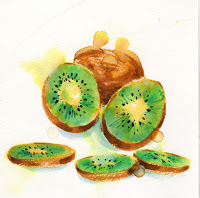
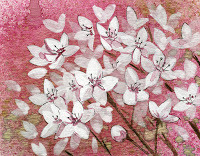
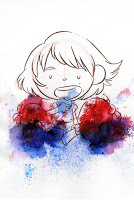
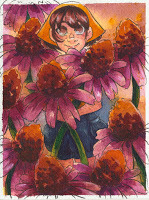
This post is part of my Watercolor Basics series, a series designed to get you painting! These simple tutorials and reviews explain the nuts and bolts of watercolor illustration and watercolor for comic art.
Some of these techniques demonstrated in today's post were covered or touched upon in All About Brusho, which I highly recommend you read if you haven't yet!
Utilizing sprays (both diluted watercolor and just plain water) can be a fun way to add an element of freedom and chaos to your watercolor work. There's numerous ways you can approach this technique, and it's great for experimentation or loosening up overly tight pieces.
Water Reactive Inks:
How it works:
Inks are applied to page (either as random swatches, like in the below example, or in a tighter render, and water is sprayed on the ink from a spraybottle or flicked from a brush. This reactivates the dyes and causes them to run into one another, giving a mottled, splatter effect depending on the amount of water used.
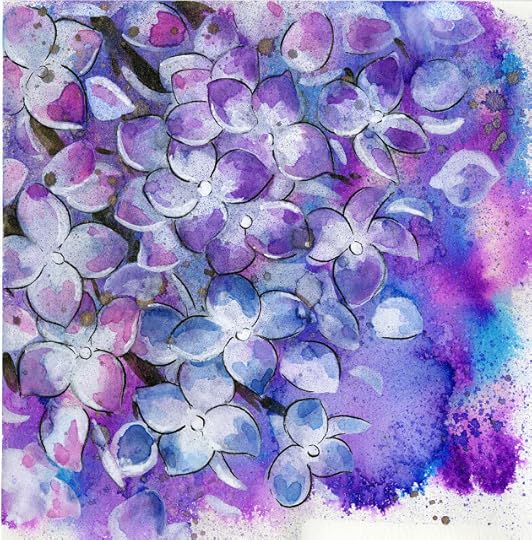 MozArt Watercolor markers on Fluid Watercolor Paper. Markers were randomly applied, then sprayed with water. Allowed to dry, then hydrangea were sketched, painted, and inked on top.
MozArt Watercolor markers on Fluid Watercolor Paper. Markers were randomly applied, then sprayed with water. Allowed to dry, then hydrangea were sketched, painted, and inked on top.
Typically dye based, but not always. This technique will work with pigment based watercolor markers like Winsor and Newton Watercolor markers as well- so long as the ink has not dried. This technique also works with still wet India and Acrylic inks as well.
These techniques work particularly well with dye-based watercolor markers, such as Kuretake Clean Color Real Brush Markers, Akashiya Sai markers, or even MozArt watercolor markers.
Watercoloring Wild Hydrangea Timelapse:
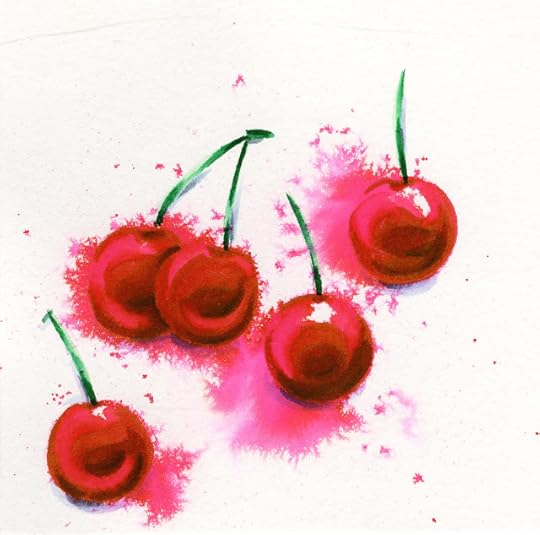 Kuretake Clean Color Real Brush. Base color applied, sprayed with water, then illustration tightened up and details added.
Kuretake Clean Color Real Brush. Base color applied, sprayed with water, then illustration tightened up and details added.
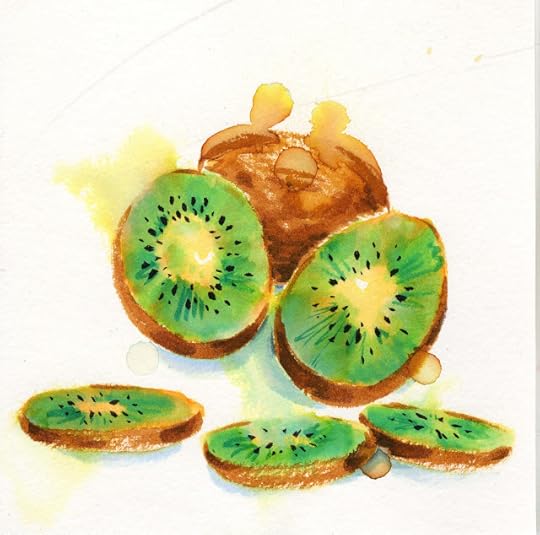 Kuretake Clean Color Real Brush. Base colors applied, sprayed with water, then illustration tightened up and details added.
Kuretake Clean Color Real Brush. Base colors applied, sprayed with water, then illustration tightened up and details added.
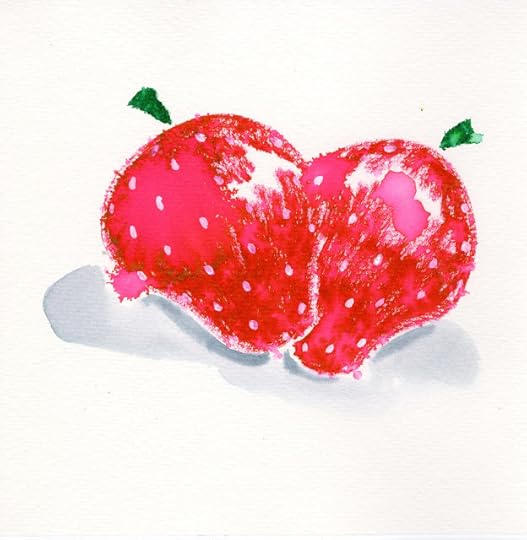 Kuretake Clean Color Real Brush. Base color applied, sprayed with water, then illustration tightened up and details added.
Kuretake Clean Color Real Brush. Base color applied, sprayed with water, then illustration tightened up and details added.
Waterbased Sprays and Inks
How it works:
Pre-mixed (or mixed at home) waterbased or pigment based particles suspended in water are sprayed onto the surface of the paper. Water may or may not be sprayed on top.
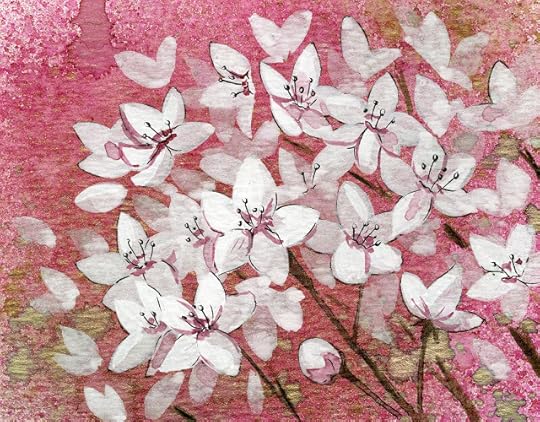 Tattered Angels sprays, cherry blossoms sketched and paintied on top.
Tattered Angels sprays, cherry blossoms sketched and paintied on top.
These sprays can be purchased pre-mixed, and typically feature dye based, water reactive inks intended for this purpose. These are frequently used in cardmaking, art journaling, and stamping. Artists often make their own sprays as well by diluting tube watercolor paints in water. Finely ground mica or pearlescent/iridescent additives may be added for shimmer. Pre mixed sprays include Tattered Angels Glimmer sprays, Ranger Dylusions Ink Sprays , and Recollections sprays.
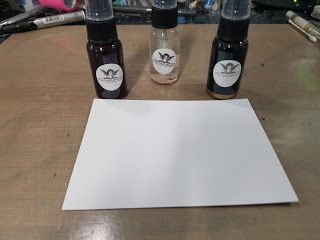
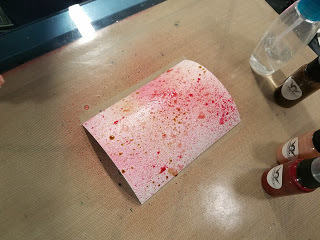
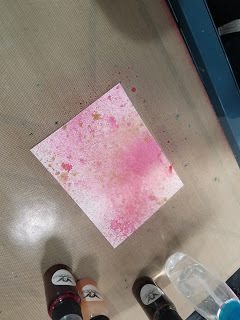
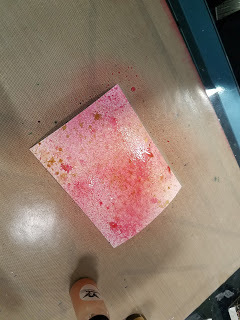
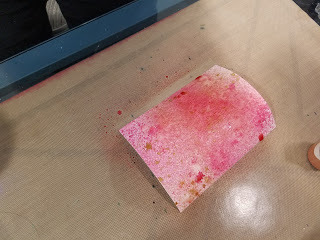
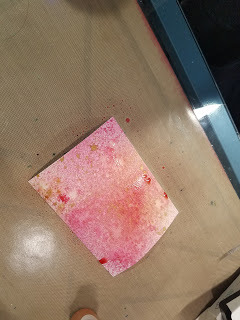
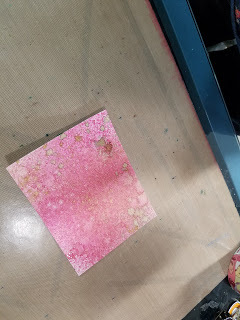
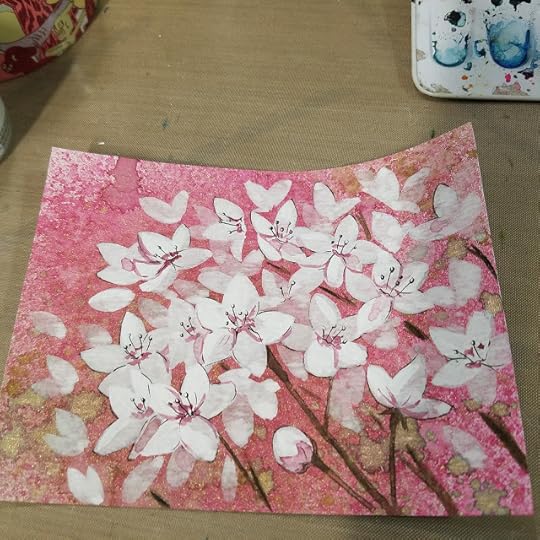 Tattered Angels sprays, cherry blossoms sketched and painted on top.
Tattered Angels sprays, cherry blossoms sketched and painted on top.
With Water Reactive Watercolor Crystals
How it works:
Illustration is inked or pencilled. Masking fluid is applied if desired to mask out areas for white or reserved painting at a later time. Brusho is applied, spritzed with water or water is applied and Brusho is sprinkled into the water. Illustration is allowed to dry, then may be further spritzed for better color movement. Allowed to dry again, excess Brusho is brushed away with a drafting brush, masking fluid is removed.
Mixed Berry Timelapse
This works with any powdered, crystalline, dye based watercolor- Brusho or Ken Oliver's Colorburst, and is a simple, fun technique with bright results!
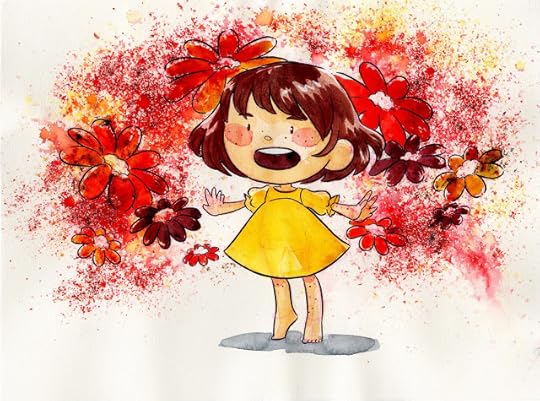 Inked illustration, Brusho was sprinkled on and sprayed, then paint applied once Brusho removed.
Inked illustration, Brusho was sprinkled on and sprayed, then paint applied once Brusho removed.
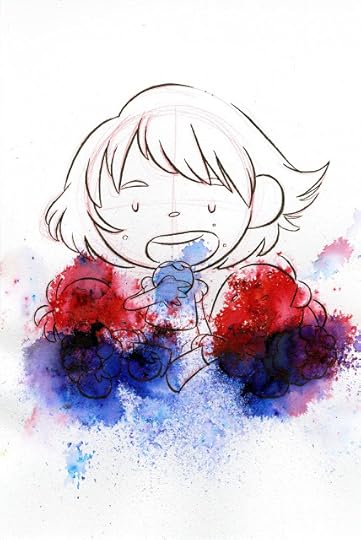 Inked illustration, Brusho applied then sprayed.
Inked illustration, Brusho applied then sprayed.
Starting Point for Tighter Watercolors
How It Works:
There are many variations on this method, from applying your watercolor wet into wet on the paper, then spraying with water for movement, to spraying your watercolors directly onto the paper!
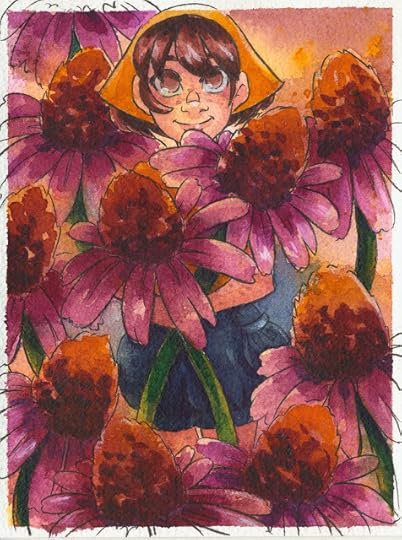 Inked illustration on Winsor and Newton cellulose watercolor paper, sprayed paints, watercolor.
Inked illustration on Winsor and Newton cellulose watercolor paper, sprayed paints, watercolor.
For this technique, a bit of tube watercolor can be mixed with a spray bottle of water to create an instant watercolor spray, or you can use a spraybottle full of clean water to help push wet or semi-wet pigments around on your paper. For this technique, I really recommend working on heavier watercolor paper (at least 140lb) and SECURE YOUR PAPER. Cellulose and cotton rag papers will both work for this, but you may have better blending results with cotton rag paper.
Hidden in Flowers- Spray Techniques Tutorial Watercolor Basics
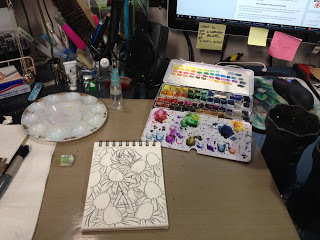
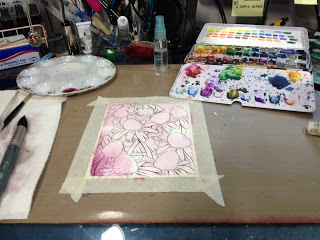
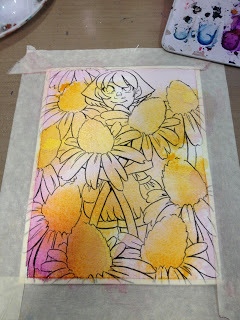
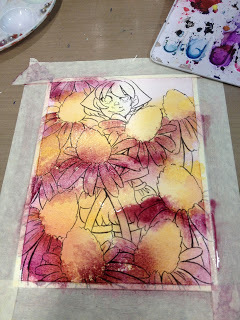
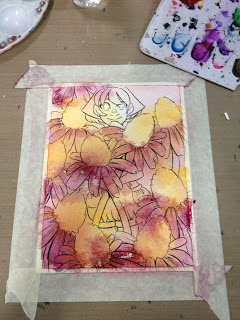
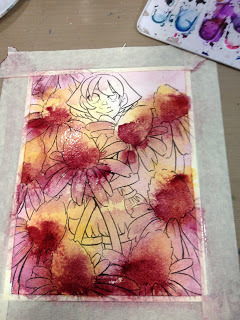
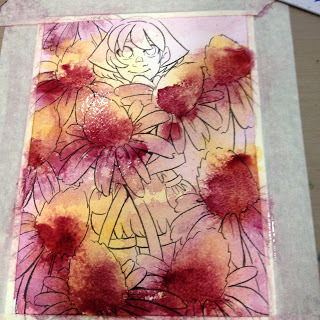
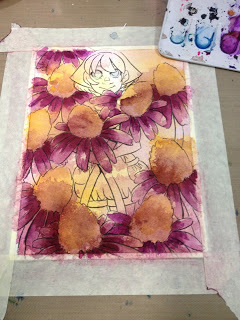
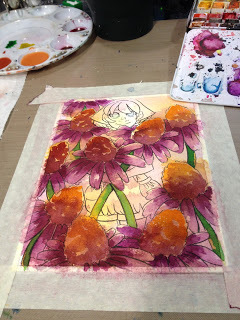
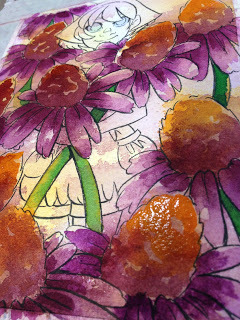
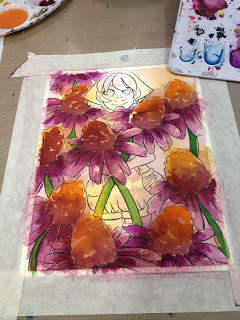
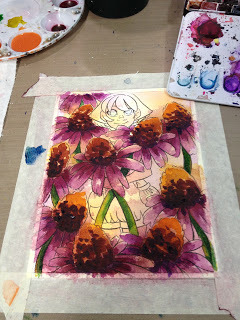
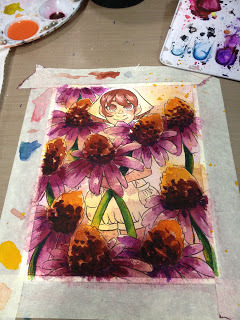
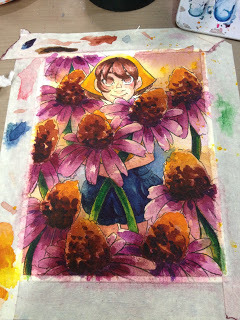
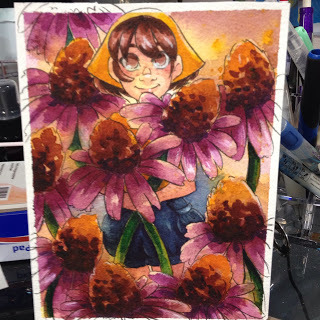
 Inked illustration on Winsor and Newton cellulose watercolor paper, sprayed paints, watercolor.
Inked illustration on Winsor and Newton cellulose watercolor paper, sprayed paints, watercolor.
For Backgrounds and Atmosphere:
In this technique, sprays are mostly reserved for the background- to add interest to an otherwise boring background.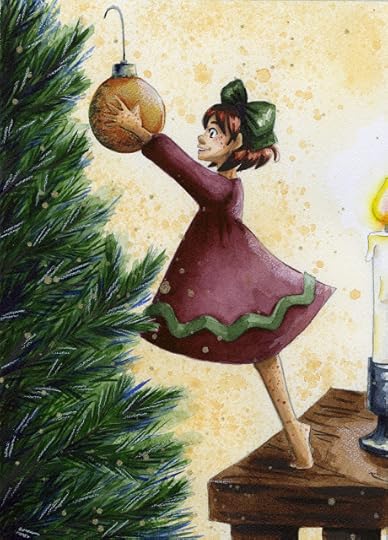 Qor Quinacridone Gold diluted in water and spritzed onto background.
Qor Quinacridone Gold diluted in water and spritzed onto background.
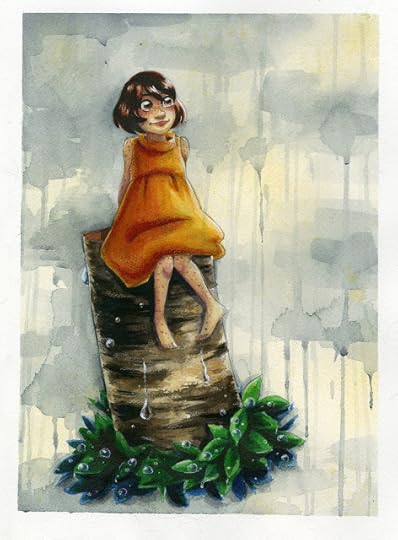 Winsor and Newton Payne's Grey+Indgo and Qor Quinacridone Gold. Quin gold was sprayed and used to dilute Payne's Grey+Indigo mix, Indigo mix and Payne's Grey allowed to drip freely.
Winsor and Newton Payne's Grey+Indgo and Qor Quinacridone Gold. Quin gold was sprayed and used to dilute Payne's Grey+Indigo mix, Indigo mix and Payne's Grey allowed to drip freely.
Using Sprays To Lift and Add Dynamism:
How it's done:
Sprays are utilized throught the process to move pigments around and to encourage wet into wet randomized blends.
I hope this post has inspired you to give spray techniques a try! Some are very simple, and some require a lot of practice to master, and some will continue to surprise you for years to come! Spray techniques are a great way to loosen up stiff painting styles, and add a fun element to your watercolor illustrations.
This post was brought to you thanks to the generosity of my Artnerds on Patreon!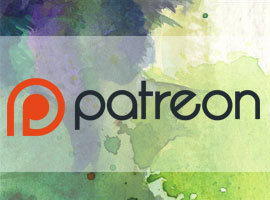
Please consider donating to this blog or purchasing from Natto-shop (http://nattosoup.com/shop) if you want me to continue publishing quality content. All materials tested were purchased from my own pocket. Keep on Truckin' Nattosoup is not under any sponsorship.




This post is part of my Watercolor Basics series, a series designed to get you painting! These simple tutorials and reviews explain the nuts and bolts of watercolor illustration and watercolor for comic art.
Some of these techniques demonstrated in today's post were covered or touched upon in All About Brusho, which I highly recommend you read if you haven't yet!
Utilizing sprays (both diluted watercolor and just plain water) can be a fun way to add an element of freedom and chaos to your watercolor work. There's numerous ways you can approach this technique, and it's great for experimentation or loosening up overly tight pieces.
Water Reactive Inks:
How it works:
Inks are applied to page (either as random swatches, like in the below example, or in a tighter render, and water is sprayed on the ink from a spraybottle or flicked from a brush. This reactivates the dyes and causes them to run into one another, giving a mottled, splatter effect depending on the amount of water used.
 MozArt Watercolor markers on Fluid Watercolor Paper. Markers were randomly applied, then sprayed with water. Allowed to dry, then hydrangea were sketched, painted, and inked on top.
MozArt Watercolor markers on Fluid Watercolor Paper. Markers were randomly applied, then sprayed with water. Allowed to dry, then hydrangea were sketched, painted, and inked on top.Typically dye based, but not always. This technique will work with pigment based watercolor markers like Winsor and Newton Watercolor markers as well- so long as the ink has not dried. This technique also works with still wet India and Acrylic inks as well.
These techniques work particularly well with dye-based watercolor markers, such as Kuretake Clean Color Real Brush Markers, Akashiya Sai markers, or even MozArt watercolor markers.
Watercoloring Wild Hydrangea Timelapse:
 Kuretake Clean Color Real Brush. Base color applied, sprayed with water, then illustration tightened up and details added.
Kuretake Clean Color Real Brush. Base color applied, sprayed with water, then illustration tightened up and details added. Kuretake Clean Color Real Brush. Base colors applied, sprayed with water, then illustration tightened up and details added.
Kuretake Clean Color Real Brush. Base colors applied, sprayed with water, then illustration tightened up and details added. Kuretake Clean Color Real Brush. Base color applied, sprayed with water, then illustration tightened up and details added.
Kuretake Clean Color Real Brush. Base color applied, sprayed with water, then illustration tightened up and details added.Waterbased Sprays and Inks
How it works:
Pre-mixed (or mixed at home) waterbased or pigment based particles suspended in water are sprayed onto the surface of the paper. Water may or may not be sprayed on top.
 Tattered Angels sprays, cherry blossoms sketched and paintied on top.
Tattered Angels sprays, cherry blossoms sketched and paintied on top.These sprays can be purchased pre-mixed, and typically feature dye based, water reactive inks intended for this purpose. These are frequently used in cardmaking, art journaling, and stamping. Artists often make their own sprays as well by diluting tube watercolor paints in water. Finely ground mica or pearlescent/iridescent additives may be added for shimmer. Pre mixed sprays include Tattered Angels Glimmer sprays, Ranger Dylusions Ink Sprays , and Recollections sprays.







 Tattered Angels sprays, cherry blossoms sketched and painted on top.
Tattered Angels sprays, cherry blossoms sketched and painted on top.With Water Reactive Watercolor Crystals
How it works:
Illustration is inked or pencilled. Masking fluid is applied if desired to mask out areas for white or reserved painting at a later time. Brusho is applied, spritzed with water or water is applied and Brusho is sprinkled into the water. Illustration is allowed to dry, then may be further spritzed for better color movement. Allowed to dry again, excess Brusho is brushed away with a drafting brush, masking fluid is removed.
Mixed Berry Timelapse
This works with any powdered, crystalline, dye based watercolor- Brusho or Ken Oliver's Colorburst, and is a simple, fun technique with bright results!
 Inked illustration, Brusho was sprinkled on and sprayed, then paint applied once Brusho removed.
Inked illustration, Brusho was sprinkled on and sprayed, then paint applied once Brusho removed. Inked illustration, Brusho applied then sprayed.
Inked illustration, Brusho applied then sprayed.Starting Point for Tighter Watercolors
How It Works:
There are many variations on this method, from applying your watercolor wet into wet on the paper, then spraying with water for movement, to spraying your watercolors directly onto the paper!
 Inked illustration on Winsor and Newton cellulose watercolor paper, sprayed paints, watercolor.
Inked illustration on Winsor and Newton cellulose watercolor paper, sprayed paints, watercolor.For this technique, a bit of tube watercolor can be mixed with a spray bottle of water to create an instant watercolor spray, or you can use a spraybottle full of clean water to help push wet or semi-wet pigments around on your paper. For this technique, I really recommend working on heavier watercolor paper (at least 140lb) and SECURE YOUR PAPER. Cellulose and cotton rag papers will both work for this, but you may have better blending results with cotton rag paper.
Hidden in Flowers- Spray Techniques Tutorial Watercolor Basics















 Inked illustration on Winsor and Newton cellulose watercolor paper, sprayed paints, watercolor.
Inked illustration on Winsor and Newton cellulose watercolor paper, sprayed paints, watercolor.
For Backgrounds and Atmosphere:
In this technique, sprays are mostly reserved for the background- to add interest to an otherwise boring background.
 Qor Quinacridone Gold diluted in water and spritzed onto background.
Qor Quinacridone Gold diluted in water and spritzed onto background. Winsor and Newton Payne's Grey+Indgo and Qor Quinacridone Gold. Quin gold was sprayed and used to dilute Payne's Grey+Indigo mix, Indigo mix and Payne's Grey allowed to drip freely.
Winsor and Newton Payne's Grey+Indgo and Qor Quinacridone Gold. Quin gold was sprayed and used to dilute Payne's Grey+Indigo mix, Indigo mix and Payne's Grey allowed to drip freely. Using Sprays To Lift and Add Dynamism:
How it's done:
Sprays are utilized throught the process to move pigments around and to encourage wet into wet randomized blends.
I hope this post has inspired you to give spray techniques a try! Some are very simple, and some require a lot of practice to master, and some will continue to surprise you for years to come! Spray techniques are a great way to loosen up stiff painting styles, and add a fun element to your watercolor illustrations.
This post was brought to you thanks to the generosity of my Artnerds on Patreon!

Please consider donating to this blog or purchasing from Natto-shop (http://nattosoup.com/shop) if you want me to continue publishing quality content. All materials tested were purchased from my own pocket. Keep on Truckin' Nattosoup is not under any sponsorship.

Published on May 03, 2018 13:00
April 30, 2018
Ink Drop Cafe Launch Anniversary
A year ago, Ink Drop Cafe launched! Today, we're taking a moment to celebrate our one year anniversary with art, fun events, and a member spotlight!

For those of you not familiar with Ink Drop Cafe, IDC is a webcomic collective with a variety of amazing member comics and wonderful artist resources. We have a thriving Discord community, and many of our members and affiliates are organizers for webcomic community events and resources.
2017 was a long, eventful year for Ink Drop. We launched in April with eleven members and three affiliated resources. We've now grown to 13 members and a five affiliated resources. We have a thriving community on Discord with over 50 chatters from across the globe and across comics, and seventeen boards open to the public covering topics such as ArtShare, Critique, wip_world, and Comic Promotion. Ink Drop Cafe's Discord server has become a great place to share your work, make new friends, and talk about comic artist life.
For comic artists who work at home, community can be hard to come by. Social networking sites promise a lot, but often fail to deliver real human interactions. Participating in Ink Drop Cafe, and chatting on their Discord has given me the online community of friends who experience the same struggles and triumphs I do. I've had the pleasure of watching artists grow and develop, read comics as works in progress before anyone else, and making new friends.
Our website is currently undergoing revitalization as we add a resource library, but it continues to serve as a hub for member comics. There you can find links to all 13 of our fantastic comics, artist bios, and a short synopsis for each comic, as well as links to our affiliates. The Ink Drop Site also has a useful calendar of online events that range from update days to online comic community events such as Webcomic Chat and Comic Artists Unite.
Since last year's launch, we've had The Angel With Black Wings, Peter Pan, Pathways, and Fate join our roster of phenomenal webcomics. Shooting-Stars (Photoshop and CSP brush resources) and Archive Binge (webcomic reading list organization) joined our ranks as affiliates.
What Makes Ink Drop Cafe Different?
In Ink Drop Cafe, community support is important. From supporting one another as members and comic artists, to supporting the outside community through online community service, Ink Drop Cafe really prizes comic artists who give a little extra back. Our Discord server is more than just a place to drop off promotional links- it's a community where you can workshop out ideas (written and drawn), share your worldbuilding, make new friends, and share your woes. In the upcoming year, we hope to continue this support, and extend it, creating an online library of resources to help artists and creators find what they need fast.
How We Celebrated Our Anniversary:
Morning and Afternoon Drawpiles:
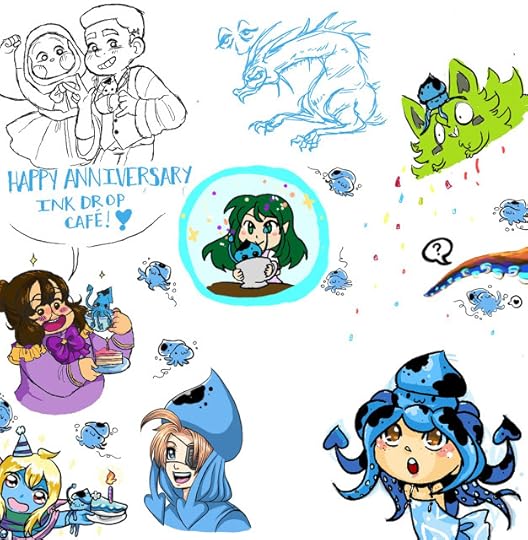
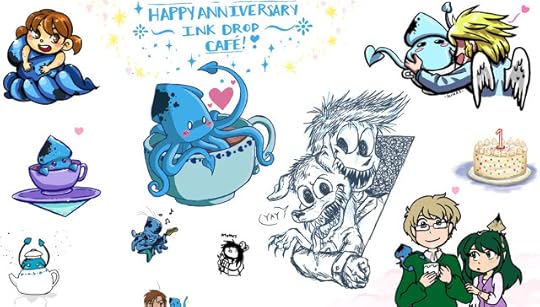
Drawpile Participants
Beccahttp://www.nattosoup.com/
Shoonahttp://www.shoonabrowning.com/
Mharzhttp://www.mharz.com/
DracoPlatohttp://www.khyatix.com/
Kabochahttp://www.shooting-stars.org/
quietznoozehttp://www.radiosilencecomic.com/
KC(BrushBandit)https://brushbandit.deviantart.com/
KANDYhttps://twitter.com/SuperTitaniumB
Respheal http://www.galebound.com/
Keii4iihttp://www.heartofkeol.com/
CalimonGraalhttp://fenauriverse.moe/
BomberBee
https://bomberbees.deviantart.com/
Ongoing Fanart Contest:
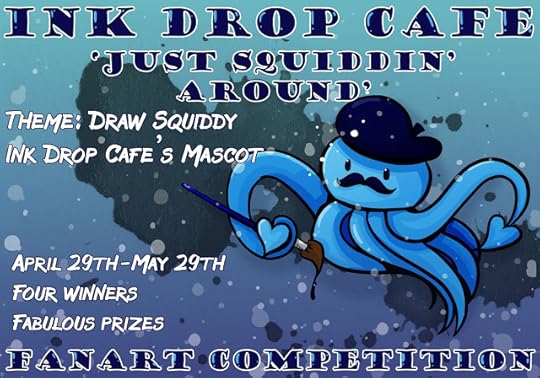
You can find the rules on the Ink Drop Cafe site!
Member Spotlights on the Ink Drop Cafe Twitter
Anniversary Promotional Art
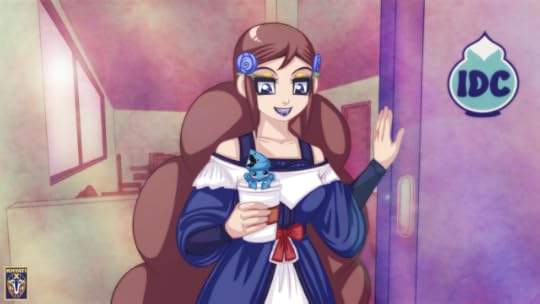 Daphne from Witch Carnival, enjoying a tall cup of Squiddy at the Ink Drop Cafe. Art by Draco Plato.
Daphne from Witch Carnival, enjoying a tall cup of Squiddy at the Ink Drop Cafe. Art by Draco Plato.
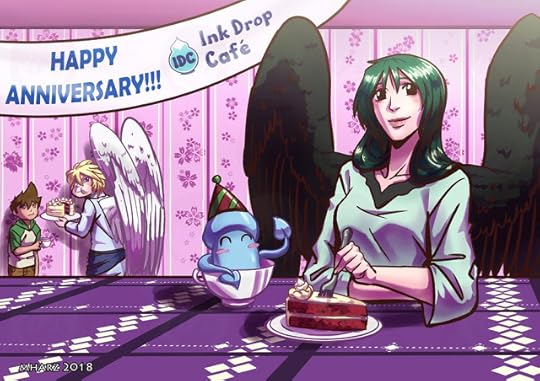 Big Sis from The Angel with Black Wings, enjoying a tasty slice of cake and ignoring the cake thieves in the background (Ray and Silver). Art by Mharz
Big Sis from The Angel with Black Wings, enjoying a tasty slice of cake and ignoring the cake thieves in the background (Ray and Silver). Art by Mharz
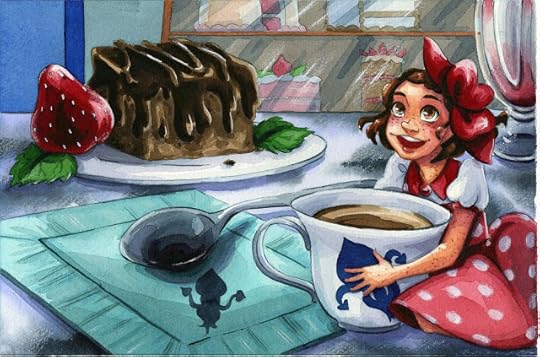 Kara from 7" Kara enjoying a cup of hot cocoa and a huge slice of fudgy cake.
Kara from 7" Kara enjoying a cup of hot cocoa and a huge slice of fudgy cake.
We've had a year to grow, and have added several wonderful new members and affiliates to our little collective. Here's a revised list of everyone who calls Ink Drop Cafe home!
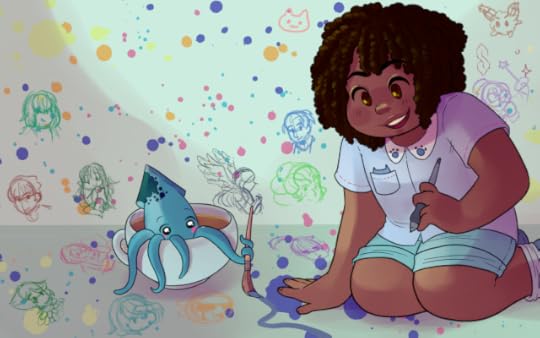 Promo art for the Ink Drop Cafe Drawpile created by the fantastic Shoona B!
Promo art for the Ink Drop Cafe Drawpile created by the fantastic Shoona B!
Get to Know Our MembersWe are involved in our community and love to see it grow bigger and better. Ink Drop Café aims to provide access to the experience of members and friends through our public Discord Channel. Ink Drop Cafe members also actively participate in online community events such as Webcomic Chat, sharing insight and encouragement freely with other comic creators.
Our members have years of experience as professional artists, illustrators, comic creators, writers, editors, reviewers, and self-publishers. Over the past year, many have contributed their knowledge and experience as guest writers for this blog.
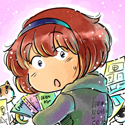
Elaine Tipping is a full time artist, part time teacher, living in Japan with her spouse and two cats. Most of her work is in webcomics (Peter Pan, Tales of a Gaijin, Bellanaris, Licensed Heroes, Princess Retribution, etc.) but she also does freelance work (such as being the line artist for Ododon Games Company). When she's not planning new stories, she enjoys food, video games, reading, and attending far too many Sailor Moon events.
Patreon: patreon.com/TriaElf9 • Tumblr: TriaElf9 • Twitter: @TriaElf9 • Instagram: TriaElf9 •
DeviantArt: triaelf9.deviantart.com

Anthea West lives in the mountains in Ireland somewhere. No one's quite sure when she's coming down or if she actually exists. Could be just a bunch of sheep in a coat, who knows?
This possible-sheep runs the website Dustbunny-Studios where you can find all her links, artwork and projects, such her award winner graphic novel The Earthbound God and her ongoing series Fate.
Patreon: patreon.com/AntheaWest • Twitter: @antheawest • Portfolio: behance.net/antheawest
"I was first introduced into Ink drop Café by Respheal, creator of Galebound and I am so very grateful for that. As a collective, Ink drop Café have been nothing but open, kind and an inspiriting bunch of creators. Fate was really starting to get on its feet during that summer of 2017 and these wonderful creators really helped me to get running not just in comic updates but also when it came to running my very first and thankfully, success Kickstarter. Not only that, I’d probably still be making the Fate website if the people of Ink Drop didn’t step in a help me out with that.
By becoming a part of the Ink Drop Café collective, I’ve not only really started to feel like a webcomic pro, but I’ve met some wonderful new friends and peers. I can only hope that I’ve been of any help to them as they have to me."
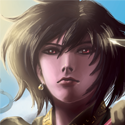
Mharz is a freelance illustrator who has worked in the animation industry for three years before shifting to creating comics. Her current projects are The Angel with Black Wings, The Robonoid Fan, and various illustrations. She also shares some drawing tips based from her experience in animation.
Patreon: patreon.com/avimharz • Website: mharz.com • Twitter: @avimharz •Instagram: avimharz
"I found out about Ink Drop Cafe from Draco Plato. I joined it a bit late than the other members and they were so nice and welcomed me. I've made some awesome friends in this community. Interacting with them has been inspiring and it helped me improve myself asa person. They also give me good advice about businessy stuffs like pricing and such whenever I asked. I'm so happy to be a member of this collective and community and I hope there are more awesome people who will join the fray in the years to come!"
 Becca Hillburn (Nattosoup) is a powerhouse of comics and art education. You can check out her all-ages comic, 7" Kara, or enjoy her art-education resources at the Nattosoup Art & Process Blog, How To Be a Con Artist, and on Youtube. You can also check out her online portfolio.Patreon: patreon.com/Nattosoup • Twitter: @Nattosoup • Instagram: @Nattosoup"This past year has been really exciting, and I'm looking forward to watching our collective grow! We've had so many exciting launches this year for new comics and new resources, and I'm eager to welcome in new friends. In the upcoming year, I hope to meet a few of my Ink Drop friends in person, and I really hope we can pursue more collaborative challenges- those are a lot of fun!"
Becca Hillburn (Nattosoup) is a powerhouse of comics and art education. You can check out her all-ages comic, 7" Kara, or enjoy her art-education resources at the Nattosoup Art & Process Blog, How To Be a Con Artist, and on Youtube. You can also check out her online portfolio.Patreon: patreon.com/Nattosoup • Twitter: @Nattosoup • Instagram: @Nattosoup"This past year has been really exciting, and I'm looking forward to watching our collective grow! We've had so many exciting launches this year for new comics and new resources, and I'm eager to welcome in new friends. In the upcoming year, I hope to meet a few of my Ink Drop friends in person, and I really hope we can pursue more collaborative challenges- those are a lot of fun!"
 Cali is a tiny artist that mostly does art as a hobby, and is the creator of Chronicles of Fenaur (and two other comics; Psychteria and Hunter of Fenaur). She's a big anime fan and likes trying to bring her characters to life.
Cali is a tiny artist that mostly does art as a hobby, and is the creator of Chronicles of Fenaur (and two other comics; Psychteria and Hunter of Fenaur). She's a big anime fan and likes trying to bring her characters to life.
Patreon: patreon.com/CalimonGraal • Website: fenauriverse.moe
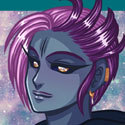 Draco Plato is a full time artist and comic creator with a BA in Visual Effects and Motion Graphics, who is also the founder of StArt Faire and KhyatiX. They have a passion for webcomics and the webcomic community and hope to see the community continue to grow in years to come.Patreon: patreon.com/KhyatiX • Website: khyatix.com • Twitter: @KhyatiX
Draco Plato is a full time artist and comic creator with a BA in Visual Effects and Motion Graphics, who is also the founder of StArt Faire and KhyatiX. They have a passion for webcomics and the webcomic community and hope to see the community continue to grow in years to come.Patreon: patreon.com/KhyatiX • Website: khyatix.com • Twitter: @KhyatiX
 Hame is a full time UI/UX Designer, an illustrator and draws the webcomic Somewhere in the Rain on her (scarce) free time. She has a thing for watercolours illustrations and randomly sharing art resources through Twitter or Discord.Twitter: @leilacmg • Instagram: @leila.gon • Tumblr: @encased
Hame is a full time UI/UX Designer, an illustrator and draws the webcomic Somewhere in the Rain on her (scarce) free time. She has a thing for watercolours illustrations and randomly sharing art resources through Twitter or Discord.Twitter: @leilacmg • Instagram: @leila.gon • Tumblr: @encased
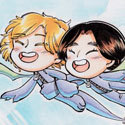 KaiJu is a two-headed monster with a passion for creating worlds rather than destroying them.
KaiJu is a two-headed monster with a passion for creating worlds rather than destroying them.
They were first published in Sparkler Monthly in April of 2014 with their debut work "The Ring of Saturn." Their next work "Mahou Josei Chimaka," won a DINKy award in March of 2016.
"Inhabitant of Another Planet," a prequel to Novae and all the previously listed stories can be found on Sparkler.
Gumroad: gumroad.com/nebulaepress • Tumblr: kaixju • Twitter: @KAIxJU
 Leanna C is an illustrator and comic artist originally from Southern California. She loves cats, coffee, and comics, preferably all at once. You can usually find her drawing, encouraging other creative people, reading a book, or listening to a podcast.
Leanna C is an illustrator and comic artist originally from Southern California. She loves cats, coffee, and comics, preferably all at once. You can usually find her drawing, encouraging other creative people, reading a book, or listening to a podcast.
Portfolio: artbyleanna.weebly.com • Twitter: @frenchpressplz • Tumblr: frenchpressplease •
Patreon:patreon.com/frenchpressplease
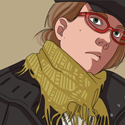
Alakotila makes comics and art, and on occasion, games. Their current focus is the fantasy webcomic "Spidersilk," though more stories may be found here. Recent publications include volume 2 of Spidersilk and a coloring book featuring women in armor. They freelance in games as a colorist and environment/ background artist, as well as freelance in comics as a copy editor. Thinks about wearing armor a lot. Probably drawing elves.
Patreon: patreon.com/alakotila • Twitter: @Alakotila • Portfolio: alakotila.com
 Michelle is a Los Angeles-based story artist who creates the cyberpunk mystery comic Centralia 2050. She loves video games, crafting, and animals, and is in an endless fashion struggle between wearing pastels+flowers or all black+skulls.Patreon: patreon.com/michelledraws • Tumblr: @michelledrawsstuff • Twitter: @michelledrawz
Michelle is a Los Angeles-based story artist who creates the cyberpunk mystery comic Centralia 2050. She loves video games, crafting, and animals, and is in an endless fashion struggle between wearing pastels+flowers or all black+skulls.Patreon: patreon.com/michelledraws • Tumblr: @michelledrawsstuff • Twitter: @michelledrawz
Instagram: @michellestanfordart
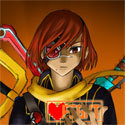 Respheal is a system administrator, gamer, and creator of the webcomic Galebound. She laments not being able to put more in this section.Patreon: patreon.com/respheal • Twitter: @galebound • Tumblr: @respheal
Respheal is a system administrator, gamer, and creator of the webcomic Galebound. She laments not being able to put more in this section.Patreon: patreon.com/respheal • Twitter: @galebound • Tumblr: @respheal
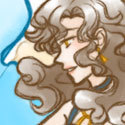 Sam (kabocha) is an illustrator and computer tinkerer. She creates the webcomic Linked and runs the resource website Shooting Stars.Website: shooting-stars.org • Tumblr: @kabocha-chan
Sam (kabocha) is an illustrator and computer tinkerer. She creates the webcomic Linked and runs the resource website Shooting Stars.Website: shooting-stars.org • Tumblr: @kabocha-chan
"Having made new friends through Ink Drop Cafe has been immensely helpful for myself as both an artist and as a person. I've gained confidence in both myself and my work, and found an audience that enjoys the things I do."
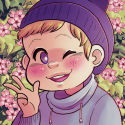 Shoona Browning is a cartoonist and illustrator who makes all ages comics with a focus on middle grade and young adult stories. They hope to create colorful and lively works that make people feel good and avoid punching down.
Shoona Browning is a cartoonist and illustrator who makes all ages comics with a focus on middle grade and young adult stories. They hope to create colorful and lively works that make people feel good and avoid punching down.
Patreon: patreon.com/shoona • Website: shoonabrowning.com • Twitter: @shoonabee"To be honest, when Becca first approached me about Ink Drop Cafe, I didn’t really feel like I had much of a community in comics, which anybody can attest is the most demoralizing thing. That changed immediately when I joined the discord and subsequently the collective. This is such a solid group of smart, creative and aggressively kind people who genuinely care about making good work AND a warm community. I feel so inspired every day to be surrounded by so many amazing people that I’ve come to be able to call friends. They inspire me to create the best work I can and pay the kindness I’ve received forward as much as I can. I’m so proud of this group and honored to be a part of it! Thanks for an amazing year!"
Get to Know Our AffiliatesInk Drop Cafe affiliates strive to provide resources and support to the greater comics community. From the weekly collation of job opportunities in Paper Cat Press, to first publishing opportunities and access to a larger audience with StArt Faire, our affiliates aim to serve the needs of the webcomic community.

Paper Cat Press Paper Cat Press is a curated online bulletin board for opportunities, creative campaigns, and resources for contemporary illustrators, writers, creative fans, and comic artists. A new Weekly Roundup posts every Friday. You can also find original articles, gift guides, webcomic lists, and creator interviews on the site.
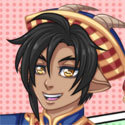
StArt Faire Comic Magazine
StArt Faire is an online monthly comic magazine with an emphasis on fantasy themed comics (comics that have one element out of the ordinary in them), and has a loose PG-13 rating. It was created by an artist for other artists, and for fans of comics, as a not for profit project that aspires to unite artists in a collaborative effort to bring the concept of the Japanese comic magazine to an international and online format.
StArt Faire currently hosts the Comic Tea Party, a wonderful opportunity for all webcomic artists! Comic Tea Party is a Discord event similar to a book club- interested creators sign up in advance, are assigned a date, and encouraged to participate in the Comic Tea Party event. Participants discuss the comic in detail based on a series of questions generated by one of the hosts.
Many of our members are now also contributing comics to StArt Faire, one of our affiliate publications! You can check out those comics and projects below as well.
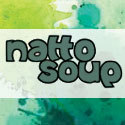
Nattosoup Studio Art and Process Blog The Nattosoup Studio Art & Process Blog is focused on a building community of students, artists, and crafters who share a passion for illustration and a vision of equal opportunity art education. For eight years, the blog has expanded efforts to help level the commercial art playing field by writing blog posts to demonstrate, educate, and enlighten fresh comic artists and illustrators. There is also an associated Youtube channel, focused on education through interviews, demonstrations, tutorials, and reviews.
Over the past year, I've run several guest posts from Ink Drop Cafe members and affiliates! Having a community I can rely on for information and inspiration has been a wonderful asset and

Archive Binge Archive Binge is a webcomic aggregator and reader. Our mission is to aggregate comic updates from multiple sources, including Tapas, Webtoons, and self-hosted comics, allowing webcomic readers to track updates and find new favorite comics more easily.
Help us celebrate our one year anniversary by checking out our webcomics, and perhaps creating an ArchiveBinge account to help you stay updated.
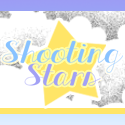
Shooting Stars Shooting Stars is a webste providing various Photoshop brushes and other resources. The website has been providing these downloads since approximately 2009, and has expanded to offering image packs and Clip Studio resources.
If you haven't checked out the Ink Drop Cafe website yet, I highly recommend you do so! Not only do we have links to all member comics and affiliate resources, we have a fantastic Calendar page that not only displays update days, but also important community events such as comic-centric Twitter chats! The front page has a handy news rotator that announces new members, Ink Drop Cafe events, and more!
In our next year, we hope to continue to grow as a collective, with plans to welcome in new members and affiliates and find new ways to reach out to the overall webcomic community. I hope you'll join us!
Please consider donating to this blog or purchasing from Natto-shop (http://nattosoup.com/shop) if you want me to continue publishing quality content. All materials tested were purchased from my own pocket. Keep on Truckin' Nattosoup is not under any sponsorship.

For those of you not familiar with Ink Drop Cafe, IDC is a webcomic collective with a variety of amazing member comics and wonderful artist resources. We have a thriving Discord community, and many of our members and affiliates are organizers for webcomic community events and resources.
2017 was a long, eventful year for Ink Drop. We launched in April with eleven members and three affiliated resources. We've now grown to 13 members and a five affiliated resources. We have a thriving community on Discord with over 50 chatters from across the globe and across comics, and seventeen boards open to the public covering topics such as ArtShare, Critique, wip_world, and Comic Promotion. Ink Drop Cafe's Discord server has become a great place to share your work, make new friends, and talk about comic artist life.
For comic artists who work at home, community can be hard to come by. Social networking sites promise a lot, but often fail to deliver real human interactions. Participating in Ink Drop Cafe, and chatting on their Discord has given me the online community of friends who experience the same struggles and triumphs I do. I've had the pleasure of watching artists grow and develop, read comics as works in progress before anyone else, and making new friends.
Our website is currently undergoing revitalization as we add a resource library, but it continues to serve as a hub for member comics. There you can find links to all 13 of our fantastic comics, artist bios, and a short synopsis for each comic, as well as links to our affiliates. The Ink Drop Site also has a useful calendar of online events that range from update days to online comic community events such as Webcomic Chat and Comic Artists Unite.
Since last year's launch, we've had The Angel With Black Wings, Peter Pan, Pathways, and Fate join our roster of phenomenal webcomics. Shooting-Stars (Photoshop and CSP brush resources) and Archive Binge (webcomic reading list organization) joined our ranks as affiliates.
What Makes Ink Drop Cafe Different?
In Ink Drop Cafe, community support is important. From supporting one another as members and comic artists, to supporting the outside community through online community service, Ink Drop Cafe really prizes comic artists who give a little extra back. Our Discord server is more than just a place to drop off promotional links- it's a community where you can workshop out ideas (written and drawn), share your worldbuilding, make new friends, and share your woes. In the upcoming year, we hope to continue this support, and extend it, creating an online library of resources to help artists and creators find what they need fast.
How We Celebrated Our Anniversary:
Morning and Afternoon Drawpiles:


Drawpile Participants
Beccahttp://www.nattosoup.com/
Shoonahttp://www.shoonabrowning.com/
Mharzhttp://www.mharz.com/
DracoPlatohttp://www.khyatix.com/
Kabochahttp://www.shooting-stars.org/
quietznoozehttp://www.radiosilencecomic.com/
KC(BrushBandit)https://brushbandit.deviantart.com/
KANDYhttps://twitter.com/SuperTitaniumB
Respheal http://www.galebound.com/
Keii4iihttp://www.heartofkeol.com/
CalimonGraalhttp://fenauriverse.moe/
BomberBee
https://bomberbees.deviantart.com/
Ongoing Fanart Contest:

You can find the rules on the Ink Drop Cafe site!
Member Spotlights on the Ink Drop Cafe Twitter
Anniversary Promotional Art
 Daphne from Witch Carnival, enjoying a tall cup of Squiddy at the Ink Drop Cafe. Art by Draco Plato.
Daphne from Witch Carnival, enjoying a tall cup of Squiddy at the Ink Drop Cafe. Art by Draco Plato. Big Sis from The Angel with Black Wings, enjoying a tasty slice of cake and ignoring the cake thieves in the background (Ray and Silver). Art by Mharz
Big Sis from The Angel with Black Wings, enjoying a tasty slice of cake and ignoring the cake thieves in the background (Ray and Silver). Art by Mharz
 Kara from 7" Kara enjoying a cup of hot cocoa and a huge slice of fudgy cake.
Kara from 7" Kara enjoying a cup of hot cocoa and a huge slice of fudgy cake.
We've had a year to grow, and have added several wonderful new members and affiliates to our little collective. Here's a revised list of everyone who calls Ink Drop Cafe home!
 Promo art for the Ink Drop Cafe Drawpile created by the fantastic Shoona B!
Promo art for the Ink Drop Cafe Drawpile created by the fantastic Shoona B!Get to Know Our MembersWe are involved in our community and love to see it grow bigger and better. Ink Drop Café aims to provide access to the experience of members and friends through our public Discord Channel. Ink Drop Cafe members also actively participate in online community events such as Webcomic Chat, sharing insight and encouragement freely with other comic creators.
Our members have years of experience as professional artists, illustrators, comic creators, writers, editors, reviewers, and self-publishers. Over the past year, many have contributed their knowledge and experience as guest writers for this blog.

Elaine Tipping is a full time artist, part time teacher, living in Japan with her spouse and two cats. Most of her work is in webcomics (Peter Pan, Tales of a Gaijin, Bellanaris, Licensed Heroes, Princess Retribution, etc.) but she also does freelance work (such as being the line artist for Ododon Games Company). When she's not planning new stories, she enjoys food, video games, reading, and attending far too many Sailor Moon events.
Patreon: patreon.com/TriaElf9 • Tumblr: TriaElf9 • Twitter: @TriaElf9 • Instagram: TriaElf9 •
DeviantArt: triaelf9.deviantart.com

Anthea West lives in the mountains in Ireland somewhere. No one's quite sure when she's coming down or if she actually exists. Could be just a bunch of sheep in a coat, who knows?
This possible-sheep runs the website Dustbunny-Studios where you can find all her links, artwork and projects, such her award winner graphic novel The Earthbound God and her ongoing series Fate.
Patreon: patreon.com/AntheaWest • Twitter: @antheawest • Portfolio: behance.net/antheawest
"I was first introduced into Ink drop Café by Respheal, creator of Galebound and I am so very grateful for that. As a collective, Ink drop Café have been nothing but open, kind and an inspiriting bunch of creators. Fate was really starting to get on its feet during that summer of 2017 and these wonderful creators really helped me to get running not just in comic updates but also when it came to running my very first and thankfully, success Kickstarter. Not only that, I’d probably still be making the Fate website if the people of Ink Drop didn’t step in a help me out with that.
By becoming a part of the Ink Drop Café collective, I’ve not only really started to feel like a webcomic pro, but I’ve met some wonderful new friends and peers. I can only hope that I’ve been of any help to them as they have to me."

Mharz is a freelance illustrator who has worked in the animation industry for three years before shifting to creating comics. Her current projects are The Angel with Black Wings, The Robonoid Fan, and various illustrations. She also shares some drawing tips based from her experience in animation.
Patreon: patreon.com/avimharz • Website: mharz.com • Twitter: @avimharz •Instagram: avimharz
"I found out about Ink Drop Cafe from Draco Plato. I joined it a bit late than the other members and they were so nice and welcomed me. I've made some awesome friends in this community. Interacting with them has been inspiring and it helped me improve myself asa person. They also give me good advice about businessy stuffs like pricing and such whenever I asked. I'm so happy to be a member of this collective and community and I hope there are more awesome people who will join the fray in the years to come!"
 Becca Hillburn (Nattosoup) is a powerhouse of comics and art education. You can check out her all-ages comic, 7" Kara, or enjoy her art-education resources at the Nattosoup Art & Process Blog, How To Be a Con Artist, and on Youtube. You can also check out her online portfolio.Patreon: patreon.com/Nattosoup • Twitter: @Nattosoup • Instagram: @Nattosoup"This past year has been really exciting, and I'm looking forward to watching our collective grow! We've had so many exciting launches this year for new comics and new resources, and I'm eager to welcome in new friends. In the upcoming year, I hope to meet a few of my Ink Drop friends in person, and I really hope we can pursue more collaborative challenges- those are a lot of fun!"
Becca Hillburn (Nattosoup) is a powerhouse of comics and art education. You can check out her all-ages comic, 7" Kara, or enjoy her art-education resources at the Nattosoup Art & Process Blog, How To Be a Con Artist, and on Youtube. You can also check out her online portfolio.Patreon: patreon.com/Nattosoup • Twitter: @Nattosoup • Instagram: @Nattosoup"This past year has been really exciting, and I'm looking forward to watching our collective grow! We've had so many exciting launches this year for new comics and new resources, and I'm eager to welcome in new friends. In the upcoming year, I hope to meet a few of my Ink Drop friends in person, and I really hope we can pursue more collaborative challenges- those are a lot of fun!"
 Cali is a tiny artist that mostly does art as a hobby, and is the creator of Chronicles of Fenaur (and two other comics; Psychteria and Hunter of Fenaur). She's a big anime fan and likes trying to bring her characters to life.
Cali is a tiny artist that mostly does art as a hobby, and is the creator of Chronicles of Fenaur (and two other comics; Psychteria and Hunter of Fenaur). She's a big anime fan and likes trying to bring her characters to life.Patreon: patreon.com/CalimonGraal • Website: fenauriverse.moe
 Draco Plato is a full time artist and comic creator with a BA in Visual Effects and Motion Graphics, who is also the founder of StArt Faire and KhyatiX. They have a passion for webcomics and the webcomic community and hope to see the community continue to grow in years to come.Patreon: patreon.com/KhyatiX • Website: khyatix.com • Twitter: @KhyatiX
Draco Plato is a full time artist and comic creator with a BA in Visual Effects and Motion Graphics, who is also the founder of StArt Faire and KhyatiX. They have a passion for webcomics and the webcomic community and hope to see the community continue to grow in years to come.Patreon: patreon.com/KhyatiX • Website: khyatix.com • Twitter: @KhyatiX Hame is a full time UI/UX Designer, an illustrator and draws the webcomic Somewhere in the Rain on her (scarce) free time. She has a thing for watercolours illustrations and randomly sharing art resources through Twitter or Discord.Twitter: @leilacmg • Instagram: @leila.gon • Tumblr: @encased
Hame is a full time UI/UX Designer, an illustrator and draws the webcomic Somewhere in the Rain on her (scarce) free time. She has a thing for watercolours illustrations and randomly sharing art resources through Twitter or Discord.Twitter: @leilacmg • Instagram: @leila.gon • Tumblr: @encased KaiJu is a two-headed monster with a passion for creating worlds rather than destroying them.
KaiJu is a two-headed monster with a passion for creating worlds rather than destroying them.They were first published in Sparkler Monthly in April of 2014 with their debut work "The Ring of Saturn." Their next work "Mahou Josei Chimaka," won a DINKy award in March of 2016.
"Inhabitant of Another Planet," a prequel to Novae and all the previously listed stories can be found on Sparkler.
Gumroad: gumroad.com/nebulaepress • Tumblr: kaixju • Twitter: @KAIxJU
 Leanna C is an illustrator and comic artist originally from Southern California. She loves cats, coffee, and comics, preferably all at once. You can usually find her drawing, encouraging other creative people, reading a book, or listening to a podcast.
Leanna C is an illustrator and comic artist originally from Southern California. She loves cats, coffee, and comics, preferably all at once. You can usually find her drawing, encouraging other creative people, reading a book, or listening to a podcast.Portfolio: artbyleanna.weebly.com • Twitter: @frenchpressplz • Tumblr: frenchpressplease •
Patreon:patreon.com/frenchpressplease

Alakotila makes comics and art, and on occasion, games. Their current focus is the fantasy webcomic "Spidersilk," though more stories may be found here. Recent publications include volume 2 of Spidersilk and a coloring book featuring women in armor. They freelance in games as a colorist and environment/ background artist, as well as freelance in comics as a copy editor. Thinks about wearing armor a lot. Probably drawing elves.
Patreon: patreon.com/alakotila • Twitter: @Alakotila • Portfolio: alakotila.com
 Michelle is a Los Angeles-based story artist who creates the cyberpunk mystery comic Centralia 2050. She loves video games, crafting, and animals, and is in an endless fashion struggle between wearing pastels+flowers or all black+skulls.Patreon: patreon.com/michelledraws • Tumblr: @michelledrawsstuff • Twitter: @michelledrawz
Michelle is a Los Angeles-based story artist who creates the cyberpunk mystery comic Centralia 2050. She loves video games, crafting, and animals, and is in an endless fashion struggle between wearing pastels+flowers or all black+skulls.Patreon: patreon.com/michelledraws • Tumblr: @michelledrawsstuff • Twitter: @michelledrawz Instagram: @michellestanfordart
 Respheal is a system administrator, gamer, and creator of the webcomic Galebound. She laments not being able to put more in this section.Patreon: patreon.com/respheal • Twitter: @galebound • Tumblr: @respheal
Respheal is a system administrator, gamer, and creator of the webcomic Galebound. She laments not being able to put more in this section.Patreon: patreon.com/respheal • Twitter: @galebound • Tumblr: @respheal Sam (kabocha) is an illustrator and computer tinkerer. She creates the webcomic Linked and runs the resource website Shooting Stars.Website: shooting-stars.org • Tumblr: @kabocha-chan
Sam (kabocha) is an illustrator and computer tinkerer. She creates the webcomic Linked and runs the resource website Shooting Stars.Website: shooting-stars.org • Tumblr: @kabocha-chan"Having made new friends through Ink Drop Cafe has been immensely helpful for myself as both an artist and as a person. I've gained confidence in both myself and my work, and found an audience that enjoys the things I do."
 Shoona Browning is a cartoonist and illustrator who makes all ages comics with a focus on middle grade and young adult stories. They hope to create colorful and lively works that make people feel good and avoid punching down.
Shoona Browning is a cartoonist and illustrator who makes all ages comics with a focus on middle grade and young adult stories. They hope to create colorful and lively works that make people feel good and avoid punching down.Patreon: patreon.com/shoona • Website: shoonabrowning.com • Twitter: @shoonabee"To be honest, when Becca first approached me about Ink Drop Cafe, I didn’t really feel like I had much of a community in comics, which anybody can attest is the most demoralizing thing. That changed immediately when I joined the discord and subsequently the collective. This is such a solid group of smart, creative and aggressively kind people who genuinely care about making good work AND a warm community. I feel so inspired every day to be surrounded by so many amazing people that I’ve come to be able to call friends. They inspire me to create the best work I can and pay the kindness I’ve received forward as much as I can. I’m so proud of this group and honored to be a part of it! Thanks for an amazing year!"
Get to Know Our AffiliatesInk Drop Cafe affiliates strive to provide resources and support to the greater comics community. From the weekly collation of job opportunities in Paper Cat Press, to first publishing opportunities and access to a larger audience with StArt Faire, our affiliates aim to serve the needs of the webcomic community.

Paper Cat Press Paper Cat Press is a curated online bulletin board for opportunities, creative campaigns, and resources for contemporary illustrators, writers, creative fans, and comic artists. A new Weekly Roundup posts every Friday. You can also find original articles, gift guides, webcomic lists, and creator interviews on the site.

StArt Faire Comic Magazine
StArt Faire is an online monthly comic magazine with an emphasis on fantasy themed comics (comics that have one element out of the ordinary in them), and has a loose PG-13 rating. It was created by an artist for other artists, and for fans of comics, as a not for profit project that aspires to unite artists in a collaborative effort to bring the concept of the Japanese comic magazine to an international and online format.
StArt Faire currently hosts the Comic Tea Party, a wonderful opportunity for all webcomic artists! Comic Tea Party is a Discord event similar to a book club- interested creators sign up in advance, are assigned a date, and encouraged to participate in the Comic Tea Party event. Participants discuss the comic in detail based on a series of questions generated by one of the hosts.
Many of our members are now also contributing comics to StArt Faire, one of our affiliate publications! You can check out those comics and projects below as well.

Nattosoup Studio Art and Process Blog The Nattosoup Studio Art & Process Blog is focused on a building community of students, artists, and crafters who share a passion for illustration and a vision of equal opportunity art education. For eight years, the blog has expanded efforts to help level the commercial art playing field by writing blog posts to demonstrate, educate, and enlighten fresh comic artists and illustrators. There is also an associated Youtube channel, focused on education through interviews, demonstrations, tutorials, and reviews.
Over the past year, I've run several guest posts from Ink Drop Cafe members and affiliates! Having a community I can rely on for information and inspiration has been a wonderful asset and

Archive Binge Archive Binge is a webcomic aggregator and reader. Our mission is to aggregate comic updates from multiple sources, including Tapas, Webtoons, and self-hosted comics, allowing webcomic readers to track updates and find new favorite comics more easily.
Help us celebrate our one year anniversary by checking out our webcomics, and perhaps creating an ArchiveBinge account to help you stay updated.

Shooting Stars Shooting Stars is a webste providing various Photoshop brushes and other resources. The website has been providing these downloads since approximately 2009, and has expanded to offering image packs and Clip Studio resources.
If you haven't checked out the Ink Drop Cafe website yet, I highly recommend you do so! Not only do we have links to all member comics and affiliate resources, we have a fantastic Calendar page that not only displays update days, but also important community events such as comic-centric Twitter chats! The front page has a handy news rotator that announces new members, Ink Drop Cafe events, and more!
In our next year, we hope to continue to grow as a collective, with plans to welcome in new members and affiliates and find new ways to reach out to the overall webcomic community. I hope you'll join us!
Please consider donating to this blog or purchasing from Natto-shop (http://nattosoup.com/shop) if you want me to continue publishing quality content. All materials tested were purchased from my own pocket. Keep on Truckin' Nattosoup is not under any sponsorship.

Published on April 30, 2018 13:00



